|

HOME |
ABOUT | INDEX |
NEWS |
FACEBOOK |
CONTACT
PRIDE
Happy
LGBTQ Pride Month
Celebrate LGBTQ Pride
“Pride is everything. It is protection. It is
visibility. It is intersectional. But, most importantly,
it is a celebration of existence and protest.”
-Renee
Rapp
The
annual celebration of LGBTQ Pride is special for several
reasons....
Historical
Significance: Pride commemorates the Stonewall Riots of
1969, a pivotal moment in LGBTQ history when members of
the LGBTQ community in New York City fought back against
police harassment and discrimination. This event marked
the beginning of the modern LGBTQ rights movement.
Visibility and Awareness: Pride events are an
opportunity for LGBTQ individuals and allies to come
together, celebrate their identities, and raise
awareness about LGBTQ rights and issues. It's a time to
be visible and proud of who you are.
Community Building: Pride fosters a sense of community
and belonging among LGBTQ individuals. It's a time to
connect with others who share similar experiences and
struggles, and to find support and solidarity.
DC: Guide to Regional Fall Pride
Celebrations and LGBTQ Community Festivals
Images from WorldPride in DC
New York City Pride
NYC, San Francisco, and Other US Cities Cap Pride Month
With a Mix of Party and Protest
Your Guide to All Things Pride 2025: Survival Tips and
Hottest Events
Every Pride Celebration Happening in the
US in 2025
Cities Where Pride Was at Least One Million People
Strong
WorldPride Gathers in Washington DC as
Trump Rolls Back LGBTQ Rights
WorldPride 2025 Expects Huge March and Rally
in DC Amid Trump’s Anti-LGBTQ Agenda
Christopher Macken: Pride Month Message
World Pride DC Song - Louder Than Rainbows
How Pride is Preparing for a World Without DEI
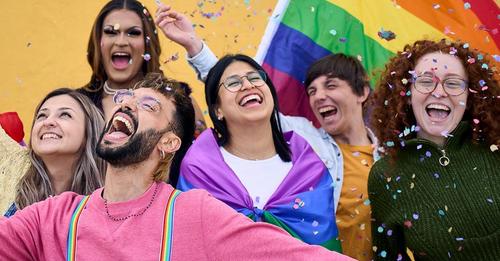
Cyndi Lauper: Happy Pride
City of Baltimore Celebrates 50 Years of Pride
Over 100,000 Take to London Streets for
Record-Breaking Trans Pride
Biden Press Secretary Karine Jean-Pierre
Named NYC Pride Parade Grand Marshal
Indiana Lt Gov is Terrified of Pride Month: The Rainbow
Beast Is Coming For Your Kids!
Mary Kate Morrisey (Wicked) at NYC Pride: Gravity
LGBTQ Pride is More Than a Parade
How to Celebrate Pride in All 50 States
Showing Pride and Support
Pride in the Streets
We Still Need Pride
Pride is a Protest
Wishing all the homophobes a super uncomfortable Pride
month...
Advocacy and Activism: Pride is also a platform for
advocacy and activism. It's a time to demand equal
rights and protections for LGBTQ individuals, and to
push for social and political change.
Cultural Celebration: Pride events often include
cultural performances, art exhibitions, and other
creative expressions of LGBTQ identity. It's a time to
celebrate LGBTQ culture and contributions to society.
Global Impact: Pride is celebrated around the world, and
it has helped to inspire LGBTQ movements and activism in
many countries. It's a reminder that the fight for LGBTQ
rights is a global struggle.
Overall, the annual celebration of LGBTQ Pride is
special because it honors the history, struggles, and
achievements of the LGBTQ community, while also
providing a platform for advocacy, visibility, and
celebration.
Pride in the Streets
Pride is a Protest
Images from WorldPride in DC
Free Mom Hugs: Washington DC Pride Parade
Photos from Philly Pride 2025: City of
Brotherly Love
Akron Ohio Pride Festival
NYC, San Francisco, and Other US Cities Cap Pride Month
With a Mix of Party and Protest
Christopher Macken: Pride Month Message
World Pride Comes to Washington DC in the Shadow of the
Trump Administration
Your Guide to All Things Pride 2025: Survival Tips and
Hottest Events
Charlotte Pride Parade1
Sapphic Alert: Here's Every Dyke March in the US in 2025
Central Alabama Pride 2025
Rhode Island 2025 PrideFest
Baltimore Celebrating 50 Years of Pride

World Pride DC Song - Louder Than Rainbows
Scenes From Boston Pride
Indiana Lt Gov is Terrified of Pride Month: The Rainbow
Beast Is Coming For Your Kids!
How Pride is Preparing for a World Without DEI
Video: San Antonio Pride
Biden Press Secretary Karine Jean-Pierre
Named NYC Pride Parade Grand Marshal
Pride Taking Over Provincetown
Birmingham Pride Parade
Pride Month: Everything You Should Know About the Global
LGBTQ Celebration
Images of Cleveland Celebrating Queer Joy
Video: Nashville Pride
Over 100,000 Take to London Streets for
Record-Breaking Trans Pride
Celebrating
LGBTQ Pride Under Donald Trump
In
2025, Pride Celebrations Will Collide with Trump Administration
Policies...
After
years of progress and the establishment of many rights
and protections, the LGBTQ community is once again under
attack. Support that was once enjoyed by the LGBTQ
community has vanished.
“There are
so many disparaging remarks being made. People feel very
emboldened and comfortable feeling very hateful and
misinformed things about the LGBTQ community,” said one
LGBTQ community activist. Since returning to the White
House in January 2025, Trump has signed executive orders
to recognize people as being only male or female and has
restricted federal funding for gender-affirming care for
transgender people under the age of 19. “There’s
certainly concerns about the future, concerns around
potential discrimination or how they may be received in
certain spaces."



We Still Need Pride
Cities Where Pride Was at Least One Million People
Strong
Massive LGBTQ Celebration About to Collide With Donald
Trump’s Administration
Images from WorldPride in DC
Pride in New Orleans
Pride Month Support Waning as National Brands Ditch DEI
Cyndi Lauper: Happy Pride
Trump and His Campaign Did Not Acknowledge Pride Month
Watertown NY: Celebrating Pride Month under Trump’s
Administration
Pride in the Streets
Pride is a Protest
Charlotte Pride Parade2
Indiana Lt Gov is Terrified of Pride Month: The Rainbow
Beast Is Coming For Your Kids!
Free Mom Hugs: Washington DC Pride Parade
Video: Nashville Pride
Scenes From Boston Pride
Baltimore Celebrating 50 Years of Pride
Great Films and TV Shows That Feature Pride Celebrations
Golden Girls Celebrate Pride
“Pride is a declaration of resilience and a gesture of
solidarity in the continuous fight to safeguard and
advance LGBTQ rights.”
-Jess, HRC
Every June, national brands celebrate Pride Month with
colorful displays of solidarity. This year, expect fewer
rainbow logos and less corporate revelry. Despite a long
track record of supporting the nation’s lesbian, gay,
bisexual, transgender and queer population, corporations
are shrinking budgets and downplaying Pride marketing as
President Donald Trump's administration cracks down on
diversity, equity and inclusion programs and transgender
rights emerges as a culture-war flashpoint.
“Normally this time of year, our company and others are
always working on Pride campaigns. Last year there was
almost nothing. This year is the same,” said one medias
expert. “I think it’s going to be a ghost town when it
comes to Pride promotions at the start of June.”



We Still Need Pride
Jennifer Lopez: Pride Tribute
City of Baltimore Celebrates 50 Years of Pride
NYC, San Francisco, and Other US Cities Cap Pride Month
With a Mix of Party and Protest
Jennifer Lopez Raises Voice for LGBTQ
Freedom at WorldPride DC
Every Pride Celebration Happening in the
US in 2025
Cities Where Pride Was at Least One Million People
Strong
WorldPride Gathers in Washington DC as
Trump Rolls Back LGBTQ Rights
Sarah McLachlan: Happy Pride Month
Over 100,000 Take to London Streets for
Record-Breaking Trans Pride
Akron Ohio Pride Festival
Historic Pride Photos From Los Angeles in
the 80s
San Francisco Pride, one of the world’s largest LGBTQ
parades, lost sponsorships from Comcast and alcoholic
beverage companies Anheuser-Busch and Diageo. PepsiCo,
Nissan and Citi are not returning to sponsor NYC Pride
this year. One-third of its partners have scaled back,
pulled funding or not yet finalized agreements.
Washington
DC is about to host a global festival for the LGBTQ
community and its allies—all while President Donald
Trump is in the White House overseeing a government that
is wholly hostile to the visitors’ goals.
WorldPride, which last came to the United States in 2019
and drew 5 million visitors to New York, is expected to
bring as many as 3 million people to the capital region
in June, with more general Pride Month events continuing
beyond that. But the events are opening under the cloud
of Trumpism that is waging a campaign against LGBTQ
protections, a Congress where lawmakers are policing
their own bathrooms against transgender individuals and
misgendering colleagues, and a Supreme Court that
recently held that the Pentagon could ban some service
members based on their gender identities.
Your Guide to All Things Pride 2025: Survival Tips and
Hottest Events
Photos from Philly Pride 2025: City of
Brotherly Love
President Joe Biden Calls on LGBTQ Community to Wave
Their Pride Flags High
Christopher Macken: Pride Month Message
Jill Biden Blasts Donald Trump as Dangerous in Surprise
Appearance at Pittsburgh LGBTQ Pride Fest
President Biden and First Lady Punctuate Pride Month
with Attendance at LGBTQ Fundraiser in New York City
Nancy Pelosi, Perhaps the Greatest LGBTQ Ally in
History, Reflects on the Meaning of Pride
Pride Month: Everything You Should Know About the Global
LGBTQ Celebration
Showing Pride and Support
Rhode Island Pride 2024: Shows Us How
It's Done!
Fun Ways to Celebrate Pride at Home
Why June is LGBTQ Pride Month
Federal Agencies Warn of Possible Threats
to LGBTQ Pride Month Events
Star-Studded LA Pride in the Park
2025 World Pride
Comes to Washington DC
In
Defiance of the Trump Administration...
The World Pride 2025 event will kick off with a welcome
concert with pop icon Shakira performing at Nationals
Stadium. Also performing in other venues will be
Jennifer Lopez, Cynthia Erivo, Doechii, Tyoye Sivan, Renee Rapp, Kim Petras,
RuPaul, Betty Who, Galantis, and Paris Hilton.
Hundreds
of LGBTQ rallies, seminars, parties, after-parties and
after-after-parties are planned for the next three weeks
across the nation’s capital, including Black Pride and
Latin Pride. It all culminates in a two-day closing
festival on June 7 and 8 with a parade, rally and
concerts on Pennsylvania Avenue.


World Pride Comes to Washington DC in the Shadow of the
Trump Administration
Sapphic Alert: Here's Every Dyke March in the US in 2025
WorldPride Gathers in Washington DC as
Trump Rolls Back LGBTQ Rights
Biden Press Secretary Karine Jean-Pierre
Named NYC Pride Parade Grand Marshal
Cities Where Pride Was at Least One Million People
Strong
Free Mom Hugs: Washington DC Pride Parade
The biannual international event typically draws more
than a million visitors from around the world and across
the LGBTQ spectrum. But this year’s events will carry
both a special resonance and a particular sense of
community-wide anxiety due to the policies of President
Donald Trump’s administration.
Trump’s public antipathy for trans protections and drag
shows has already prompted two international LGBTQ
organizations, Egale Canada and the African Human Rights
Coalition, to issue warnings against traveling to the US
at all. The primary concern is that trans or non-binary
individuals will face trouble entering the country if
passport control officers enforce the administration’s
strict binary view of gender status.
“I think it’s a fair assumption that the international
numbers won’t be as high due to the climate and the
uncertainties,” said Ryan Bos, executive director of the
Capital Pride Alliance. “At the same time we know that
there’s an urgency and importance to showing up and
making sure we remain visible and seen and protect our
freedoms.”

DC WorldPride Event
Information
Washington DC to Host WorldPride 2025
Cities Where Pride Was at Least One Million People
Strong
Cyndi Lauper: Happy Pride
DC World Pride Organizers Issue Warning to
Transgender Visitors to the US
Capital Pride Alliance: About WorldPride
WorldPride 2025 Expects Huge Visibility March and Rally
in DC Amid Trump’s Anti-LGBTQ Agenda
Event Notes: DC WorldPride 2025
Akron Ohio Pride Festival
World Pride DC Song - Louder Than Rainbows
NYC, San Francisco, and Other US Cities Cap Pride Month
With a Mix of Party and Protest
Scenes From Boston Pride
Charlotte Pride Parade1
Baltimore Celebrating 50 Years of Pride
Video: San Antonio Pride
Indiana Lt Gov is Terrified of Pride Month: The Rainbow
Beast Is Coming For Your Kids!
Free Mom Hugs: Washington DC Pride Parade
Great Films and TV Shows That Feature Pride Celebrations
Pride in New Orleans
Golden Girls Celebrate Pride
We Still Need Pride
Celebrating
LGBTQ Pride Month 2024
President Joe Biden
and First Lady Jill Biden stand up for LGBTQ rights...
President Joe Biden proclaims June 2024 as Pride
Month... Jill Biden blasts Donald Trump as
"Dangerous" in a surprise appearance at Pittsburgh LGBTQ
Pride Fest... and Adele gives a harsh but perfect
response to a homophobe who yelled 'Pride Sucks' at her
concert...
President
Joe Biden recognized Pride Month this year saying the
period celebrating LGBTQ life, experiences, struggles,
and history, helps to “reflect on the progress we have
made so far in pursuit of equality, justice, and
inclusion.” Biden pointed to the “courage” of
LGBTQ people to live out and proud even when it was
dangerous to do so. Evoking the Stonewall uprising in
1969, the president said that it was the catalyst for
LGBTQ civil rights in the US. he added,
“Courageous LGBTQ Americans continue to inspire and
bring hope to all people seeking a life true to who they
are.”
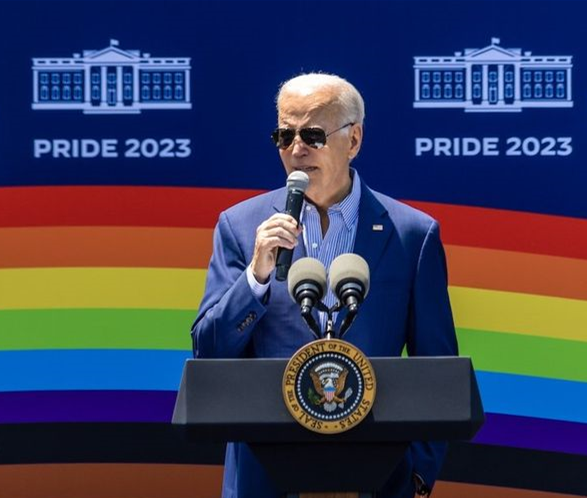
Mary Kate Morrisey (Wicked) at NYC Pride: Gravity
President Joe Biden Calls on LGBTQ Community to Wave
Their Pride Flags High
Jill Biden Blasts Donald Trump as Dangerous in Surprise
Appearance at Pittsburgh LGBTQ Pride Fest
President Biden and First Lady Punctuate Pride Month
with Attendance at LGBTQ Fundraiser in New York City
Nancy Pelosi, Perhaps the Greatest LGBTQ Ally in
History, Reflects on the Meaning of Pride
Pride Month: Everything You Should Know About the Global
LGBTQ Celebration
NYC Pride 2024: New Yorkers Celebrating
Queer Joy
LGBTQ Pride: It All Started With Protest
Fun Ways to Celebrate Pride at Home
Advocate Mag: Why Do You Have to Say
They're Gay?
Why June is LGBTQ Pride Month
Gay Pride: Fight Song
Historic Pride Photos From Los Angeles in
the 80s
In the
proclamation, Biden referred to his administration’s
advancement of LGBTQ rights, including his signing of
the Respect for Marriage Act, his order ending the ban
on trans service members in the military, as well as
executive orders protecting LGBTQ people from
discrimination in health care, employment, education,
and more. He referred to his administration’s push to
end conversion therapy and to stop the ongoing HIV
epidemic.
The president referenced the ongoing attacks against
LGBTQ people, especially those who are transgender and
LGBTQ youth. The ACLU is tracking more than 500
anti-LGBTQ bills in the US as of May 31. “These bills
and laws attack our most basic values and freedoms as
Americans: the right to be yourself, the right to make
your own medical decisions, and the right to raise your
own children. Some things should never be put at risk:
your life, your safety, and your dignity,” Biden said in
the proclamation. He also mentioned the violence queer
people have faced in attacks at Club Q in 2022 and Pulse
in 2016.
“We are
doing this work here at home and around the globe, where
LGBTQ community members are fighting for recognition of
their fundamental human rights and seeking to live full
lives, free from hate-fueled violence and
discrimination,” Joe Biden said. “I call upon the people
of the United States to recognize the achievements of
the LGBTQ community,” Biden said, “to celebrate the
great diversity of the American people, and to wave
their flags of pride high.”
[Source: Alex Cooper, Advocate, June 2024]
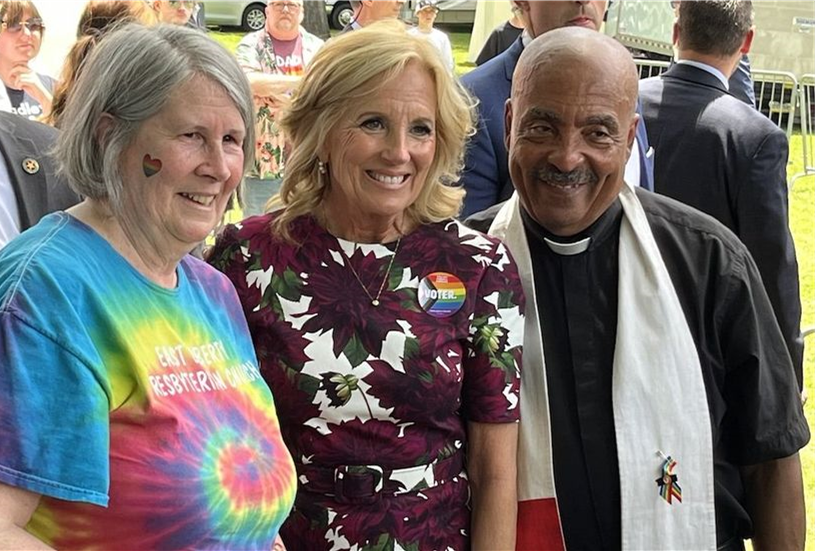
“I see
such joy and beauty and boldness in your faces, and I
love it... Every year during June, we gather in
communities across this country to celebrate how far
we’ve come, to reflect on the bravery required to live
an authentic life, and to honor the courage it takes to
stand up for what’s right.. This community is
under attack. Rights are being stripped away; freedoms
are eroding. We must fight these measures with
everything we have... Donald Trump is a bully. He’s
dangerous to the LGBTQ community, to our families, to
our country, and we cannot let him win."
-Jill
Biden, First Lady, June 2024
We Still Need Pride
Showing Pride and Support
City of Baltimore Celebrates 50 Years of Pride
Billy Porter Delivers Powerful Speech at Miami Beach
Pride
CNN: Pride Month
How to Celebrate Pride in All 50 States
Remembering Stonewall: LGBTQ Pride Started With a Riot
Akron Ohio Pride Festival
Celebrate Pride All Month Long: Pride Playlist
SNL: Pride Month Song
Disney Pride: Clarabelle Cow Takes Over
Scenes From Boston Pride
Hundreds of Thousands Attend Vancouver's Pride Festival
2023
Never March Alone: Pride in London 2023
Video: San Antonio Pride
Great Films and TV Shows That Feature Pride Celebrations
Video: Nashville Pride
Pensacola
Pride's 30th Anniversary
Florida's elected officials won't keep these partygoers
from saying gay
Even during an election year, Pensacola is showing up
and showing out for LGBTQ rights.
As the November 2024 presidential election slowly
approaches, Florida has proposed a slew of anti-LGBTQ
bills the past few years, but tourists attending
Pensacola Pride aren't giving up on equality that
easily.
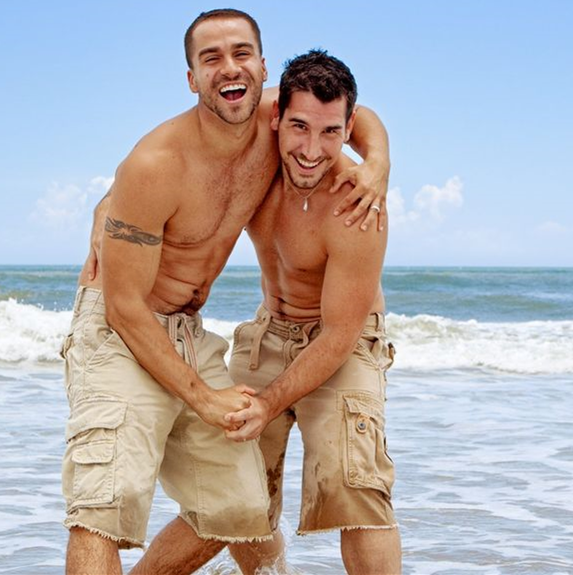
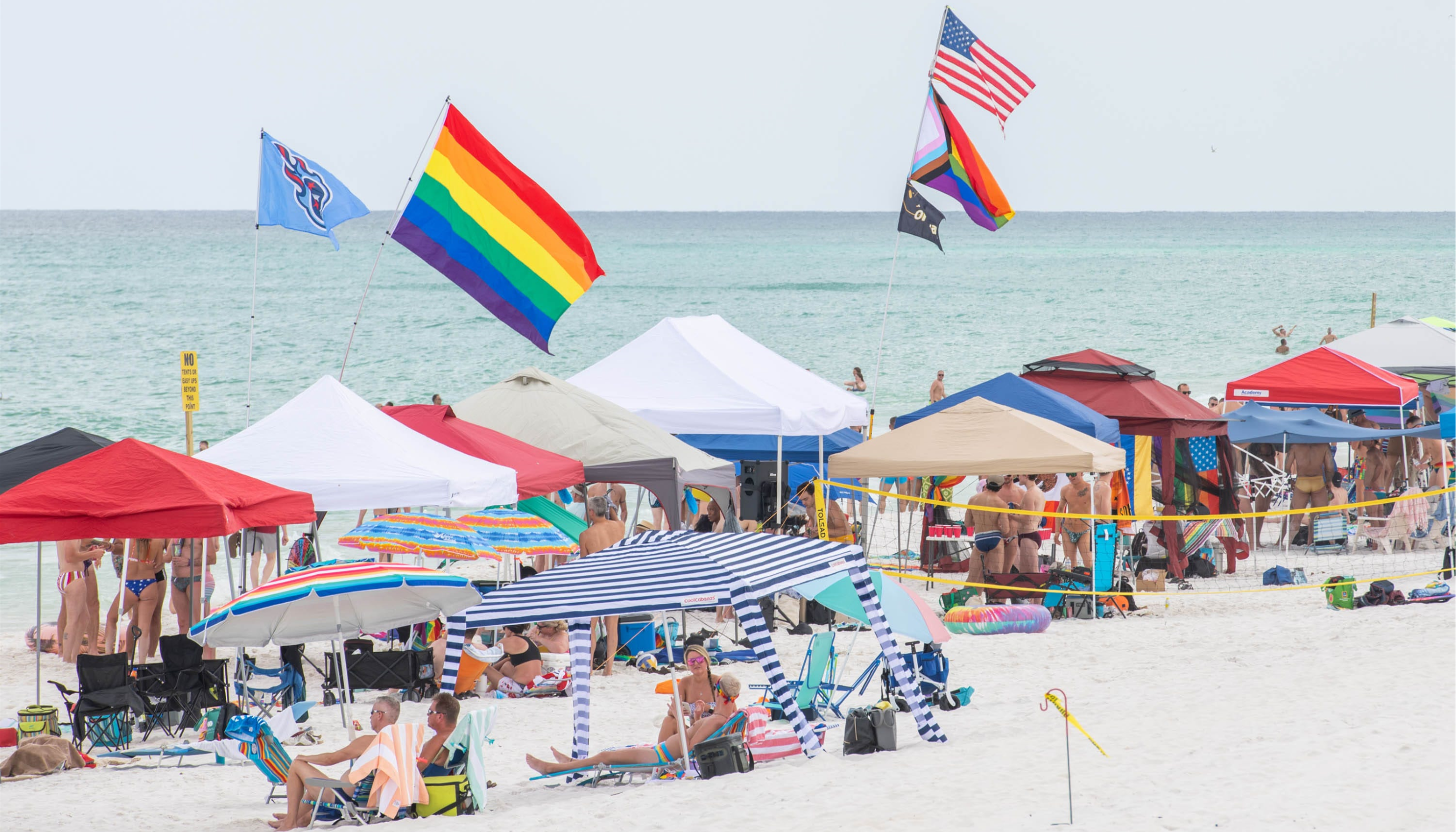
Biden Press Secretary Karine Jean-Pierre
Named NYC Pride Parade Grand Marshal
Amazing Ways to Get the Most Out of
Orlando Pride this Summer
Standing Up for Equality: Pensacola Pride's 30th
Anniversary
Everything You Need to Know for Pensacola Pride's 30th
Anniversary
Cardiff Pride Celebration
Joy
is Protest, Celebration is Dissent
Pride 101: First-Timer's Guide to LGBTQ Pride
Queerty Pride Playlist: Celebrate Pride
All Month Long
Flying with Pride: Colorful Guide to LGBTQ Flags
Birmingham Pride Parade
Music, Movies, Media:
Celebrate LGBTQ Pride
50th Anniversary: The
Revolution May Have Finally Arrived
Happy Pride: What Do We
Have to Be Proud Of?
Pride Marches From 1969 to Present: Queer History in
Photographs
This year, Memorial Weekend Pensacola is hitting their
30th anniversary and organizer Johnny Chisholm is pulling out all
the stops to ensure every member of the queer community
can show their Pride. Ahead of the big milestone
anniversary, Chisholm explains what's in store and open
up on why it's more important than ever to celebrate
Pride.
Q: Congratulations on 30 years of Pensacola Pride! What
even goes through your head when I say 30 years?
Johnny Chisholm: Thanks! Many many memories of parties
and people past.
Q: If you were able to go back in time and tell yourself
30 years ago that Pensacola Pride would still be going
strong, how do you think your younger self would react?
Chisholm: I'm happy and grateful that we are still able
to do something people enjoy after so many years.

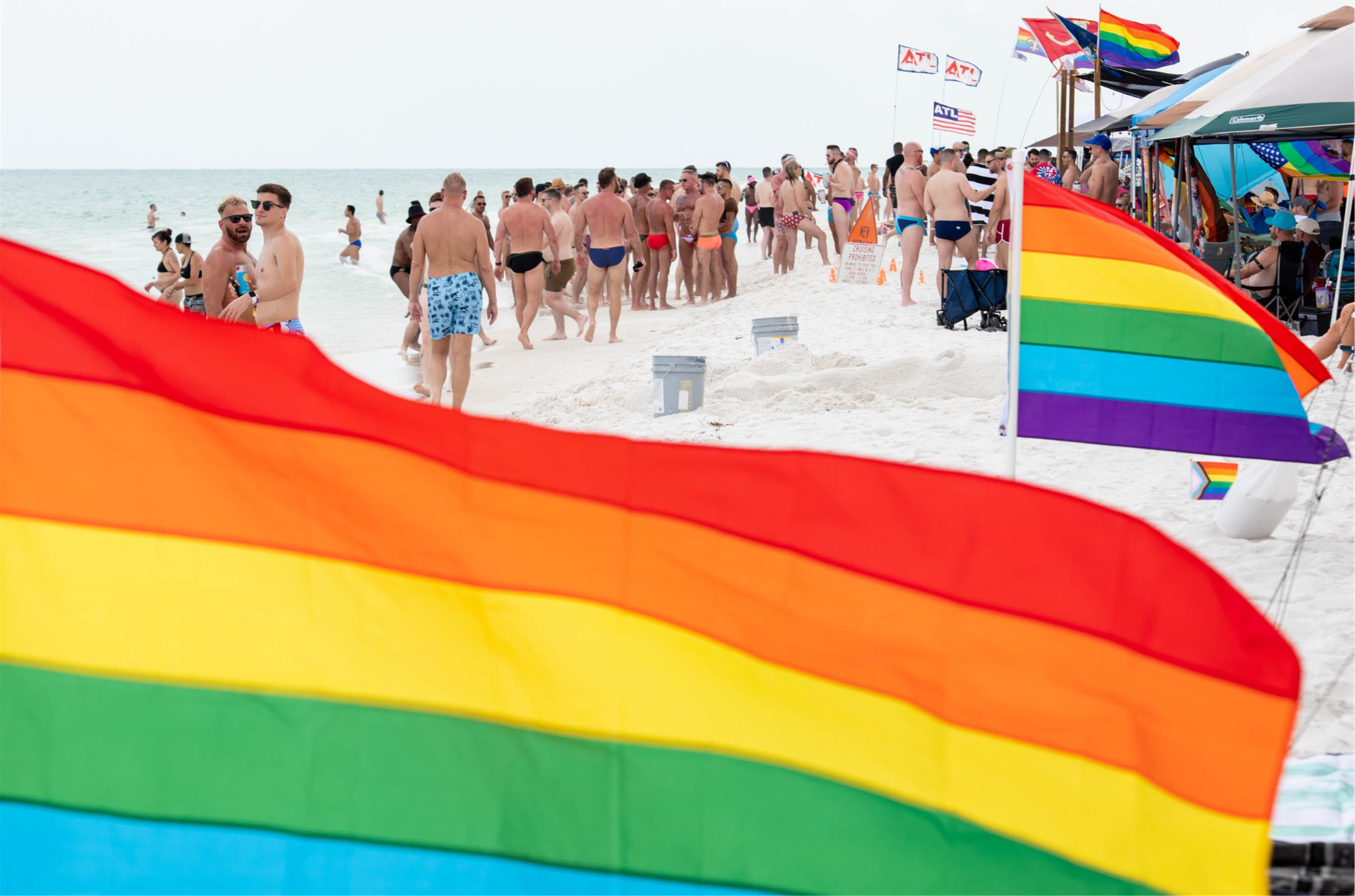
Gay Pride: Fight Song
Pride Taking Over Provincetown
How to Celebrate Pride in All 50 States
Mary Kate Morrisey (Wicked) at NYC Pride: Gravity
Rhode Island Pride 2024: Shows Us How
It's Done!
Pride Month: Everything You Should Know About the Global
LGBTQ Celebration
NYC Pride 2024: New Yorkers Celebrating
Queer Joy
Images of Cleveland Celebrating Queer Joy
Star-Studded LA Pride in the Park
Charlotte Pride Parade2
Drag Queens Describe a Pride Month Like No Other
The
Pride Parade is Scaring Ron DeSantis: Musical Tribute
Pride Month Organizers Feel Safe Despite
Far-Right Threats
Biden Rolls Out New LGBTQ Resources at WH Pride Celebration
Biden Proclaims June as LGBTQ Pride Month, Denounces
Oppression
Akron Ohio Pride Festival
Pride in London Unveils Powerful New
‘Never March Alone’ Campaign
Top Ten Best Worldwide
LGBTQ Pride Festivals
Baltimore Celebrating 50 Years of Pride
Q: 30 years is a very monumental occasion. What should
people expect for this anniversary year?
Chisholm: The same great parties and DJs. We are having
Trixie Mattel of RuPaul’s Drag Race fame spinning a
special DJ set at our Saturday Tea Dance. Our Sunday
white party will be named “Abracadabra” in honor of our
very first party 30 years ago.
Q: For people who've never attended a Pensacola Pride
before, what are they missing out on?
Chisholm: We have the most beautiful beaches and the
absolute most fabulous parties! This year, of all years,
is very important to show our Pride.
Q: With it
being an election year, why is it so vital for people in
the LGBTQ community to show their Pride this year?
Chisholm: We have to show people that we are already
here and part of the wider community.
Q: Many people in the LGBTQ community are nervous to
travel to Florida. What would you like to say to people
who are hesitant about attending Pride celebrations in
Florida?
Chisholm: Pensacola Beach is a very safe and welcoming
community.
Q: Can you give us a hint as to what DJ's you think will
come out to Pensacola Pride this year?
Chisholm: Our DJ lineup is: Abel, Robbie Carrigan, TDon,
Joe Gauthreaux, Will Lowe, Eddie Martinez, Trixie
Mattel, Dan Slater, Karsten Sollors, and Tom Stephan.
[Source: Ricky Cornish, Advocate, May 2024]

Biden Press Secretary Karine Jean-Pierre
Named NYC Pride Parade Grand Marshal
Here’s Your Gay Pride Calendar 2024
Celebrate Pride All Month Long: 2024
Pride Playlist
Gay Pride: Fight Song
Pride Taking Over Provincetown
Everything You Need to Know for Pensacola Pride's 30th
Anniversary
Billy Porter Delivers Powerful Speech at Miami Beach
Pride
Showing Pride and Support
HRC: Pride is More Than a Parade
Celebrating Pride in New Orleans
Birmingham Pride Parade
Why is it Important to Celebrate LGBTQ Pride?
LGBTQ Pride Parades Around
the World
Fun Ways to Celebrate Pride at Home
Video: Nashville Pride
Pastor Who Wants Death Penalty for Gays
Rails Against Pride Month
Advocate Mag: Why Do You Have to Say
They're Gay?

June is LGBTQ Pride Month
“During Pride Month, we honor a movement that has grown
stronger, more vibrant, and more inclusive with every
passing year. Pride is a celebration of generations of
LGBTQ people who have fought bravely to live openly and
authentically."
-President Joe Biden, June 2023
LGBTQ
Pride originated as a response to the discrimination and
oppression faced by the LGBTQ community. The catalyst
for the modern LGBTQ rights movement can be traced back
to the Stonewall riots in 1969, when the community
resisted a police raid at the Stonewall Inn in New York
City. Subsequent to this event, activists and advocates
began organizing protests and events to promote
visibility, equality, and acceptance. The first Pride
march took place on the first anniversary of the
Stonewall riots in 1970, marking the beginning of an
annual tradition that spread globally. LGBTQ pride has
since evolved into a celebration of diversity,
inclusion, and the ongoing fight for equal rights.
It takes no compromise to
give people their rights. It takes no money to respect
the individual. It takes no political deal to give
people freedom. It takes no survey to remove repression.
-Harvey Milk
When all Americans are treated as equal, no matter who
they are or whom they love, we are all more free.
-Barack Obama
So let me be clear: I'm proud to be gay, and I consider
being gay among the greatest gifts God has given me.
-Tim Cook
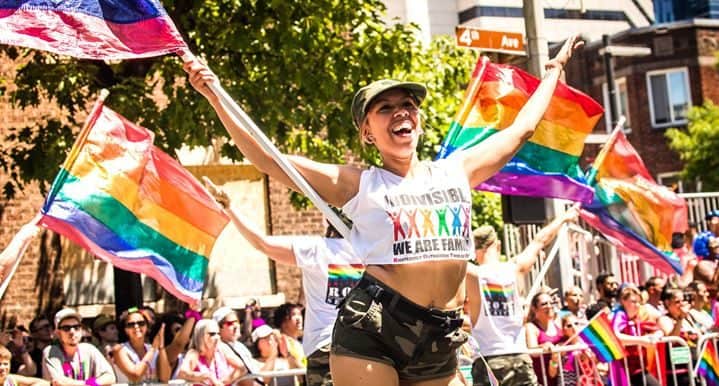
How to Celebrate Pride in All 50 States
Great Films and TV Shows That Feature Pride Celebrations
NYC Pride 2024: New Yorkers Celebrating
Queer Joy
Your Guide to Every Pride Celebration
Happening in the US in 2024
Here’s Your Gay Pride Calendar 2024
Baltimore Celebrating 50 Years of Pride
Rhode Island Pride 2024: Shows Us How
It's Done!
Pride Month: Everything You Should Know About the Global
LGBTQ Celebration
Celebrate Pride All Month Long: 2024
Pride Playlist
Images of Cleveland Celebrating Queer Joy
Star-Studded LA Pride in the Park
Advocate Mag: Why Do You Have to Say
They're Gay?
Historic Pride Photos From Los Angeles in
the 80s
Why is it important to celebrate LGBTQ Pride?
Pride is celebrated to promote the constant fight for
equality in this community. It is a platform to promote
diversity, equity, inclusion and belonging. Pride is a
wonderful celebration rooted in a peaceful protest to
open the eyes of those who struggle to see outside the
binary to understand that gender and sexuality are
fluid. That these differences are what make people
unique.
I think being gay is a blessing, and it's something I am
thankful for every single day.
-Anderson Cooper
I want to do the right thing and not hide anymore. I
want to march for tolerance, acceptance and
understanding. I want to take a stand and say, “Me,
too."
-Jason Collins
Gay rights are human rights.
-Hillary Clinton
Our society needs to recognize the unstoppable momentum
toward unequivocal civil equality for every gay,
lesbian, bisexual and transgender citizen of this
country.
-Zachary Quinto
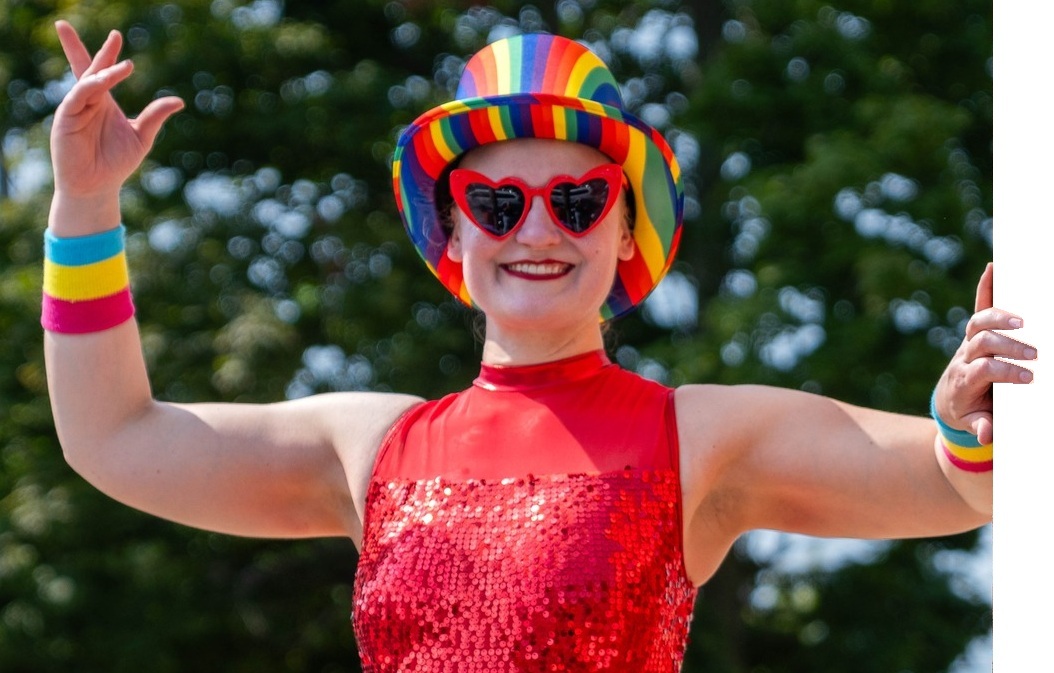 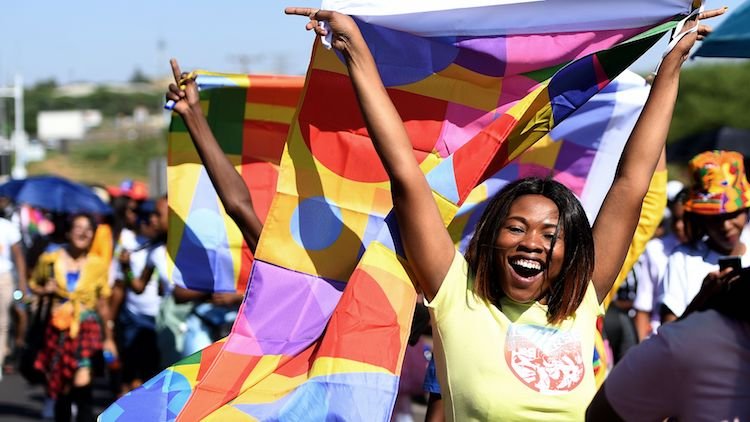
City of Baltimore Celebrates 50 Years of Pride
Biden Press Secretary Karine Jean-Pierre
Named NYC Pride Parade Grand Marshal
Mary Kate Morrisey (Wicked) at NYC Pride: Gravity
Celebrate Pride All Month Long: 2024
Pride Playlist
Birmingham Pride Parade
Anti-LGBTQ Hate and Extremism Spiked During Pride Month
2023
Images of Cleveland Celebrating Queer Joy
Pride Taking Over Provincetown
The
Pride Parade is Scaring Ron DeSantis: Musical Tribute
Pride Organizers Keep Eye on Drag Laws Ahead of
Festivals
Kamala Harris is First
Sitting VP to March in Pride Event
NPR: The Commercialization of Pride Month
How I Celebrate Pride When My Religious
Parents Taught Me that Pride is a Sin
Historic Pride Photos From Los Angeles in
the 80s
Pride Spoilers
Homophobes
and religious zealots can be a real pain in the ass
Detractors will often
often bring up the tired old notion that "pride" is one
of the seven deadly sins, right alongside lust,
gluttony, greed, sloth, wrath, and envy. They like to
quote the bible, "Pride goes before destruction and a
haughty spirit before a fall (Proverbs 16:18)."
The insinuation is that LGBTQ Pride events and their
attendees are somehow sinful.
Of course,
it is a very childish, mean-spirited, and uninformed
perspective.
We see lots of homophobes preaching the sin of "pride"
without any regard for its original meaning as
translated from ancient bible text and without any
reverence for the people who have no ill-intent in its
expression.
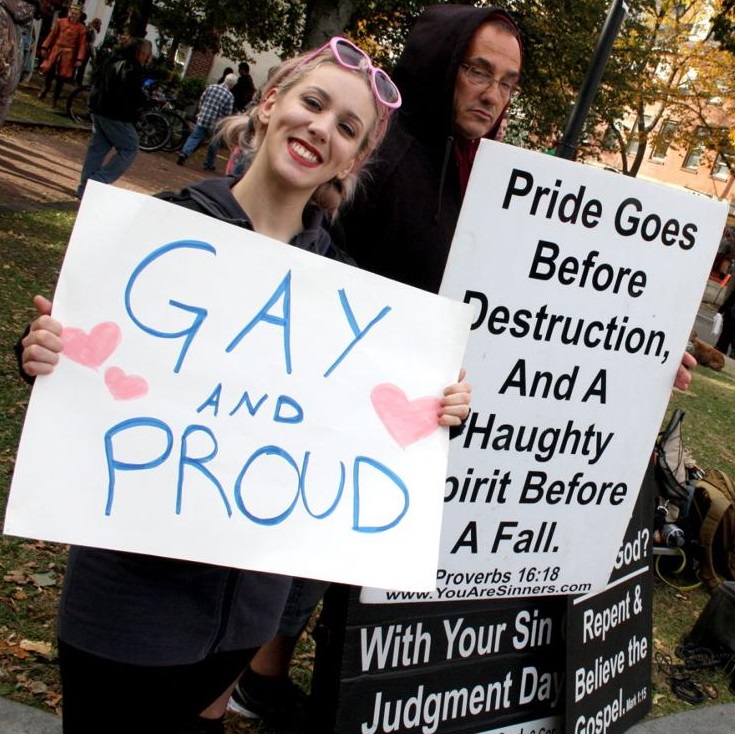
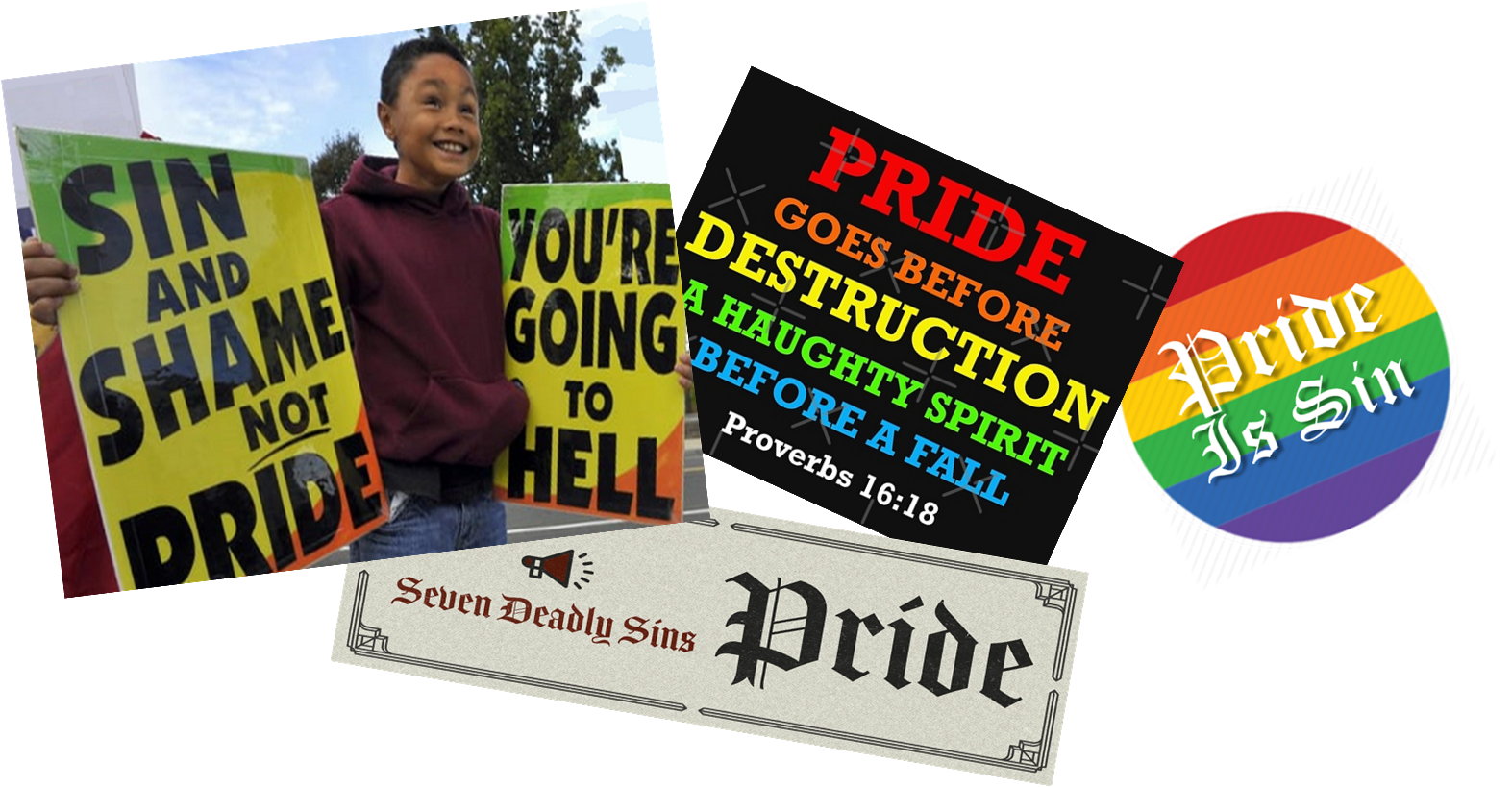
What the old testament talks about is "hubris," which is
an exaggerated sense of self-importance, arrogance,
haughtiness, egotism, boastfulness, and vanity. It's
about bragging and self-aggrandizement. Being smug,
conceited, and pompous.
The "pride" associated with LGBTQ celebrations is not
the same thing. It is about affirmation, honor, dignity,
and self-worth. It is related to satisfaction and
self-esteem, and a feeling of success and achievement.
It is similar to being proud of a noble accomplishment
or being a proud parent or the pride you feel in being
an American. It is not a nefarious trait.
There is no reason for these hateful religious zealots
to denigrate a group of people who are simply expressing
the joy and delight in living their lives.
Amazing Ways to Get the Most Out of
Orlando Pride this Summer
Standing Up for Equality: Pensacola Pride's 30th
Anniversary
Taylor Swift Marks Pride Month and Condemns Anti-LGBTQ
Bills
Pride Is More Than a Parade Says Human
Rights Campaign
Warning: Proud Boys Plan to Target Pride Month
Celebrations
Video: Nashville Pride
Virtually or In-Person:
Tips for Celebrating Pride
Advocate Mag: Why Do You Have to Say
They're Gay?
Baltimore Celebrating 50 Years of Pride
Fun Ways to Celebrate Pride at Home
Showing Pride and Support
Gay Pride: Fight Song
LGBTQ Pride 2023
With LGBTQ
Pride Month upcoming in June, the current atmosphere in
the US regarding the LGBTQ community is intolerant to
dangerous... Retailers and manufacturers offering
LGBTQ merchandise are being threatened.... White
Nationalist groups plan to disrupt Pride events...
Attacks on drag queens and drag shows are spreading...
LGBTQ books are being banned... Schools are being
pressured... Anti-LGBTQ legislation is rampant
nationwide...
Target is removing some
items from its stores and making other changes to its
LGBTQ merchandise nationwide ahead of Pride month after
intense backlash from some customers who confronted
workers and tipped over displays. “Since introducing
this year’s collection, we’ve experienced threats
impacting our team members’ sense of safety and
well-being while at work,” Target said in a statement.
”Given these volatile circumstances, we are making
adjustments to our plans, including removing items that
have been at the center of the most significant
confrontational behavior.”
Target offers more than
2,000 products, including clothing, books, music and
home furnishings as part of its Pride Collection,
Reuters reports. The items include “gender fluid” mugs,
“queer all year” calendars and books for children aged
2-8 titled “Bye Bye, Binary,” “Pride 1,2,3” and “I’m not
a girl.” Screenshots and posts on social media show that
Target previously sold a slogan sweater with the words
“cure transphobia not trans people” and a “too queer for
here” tote bag.
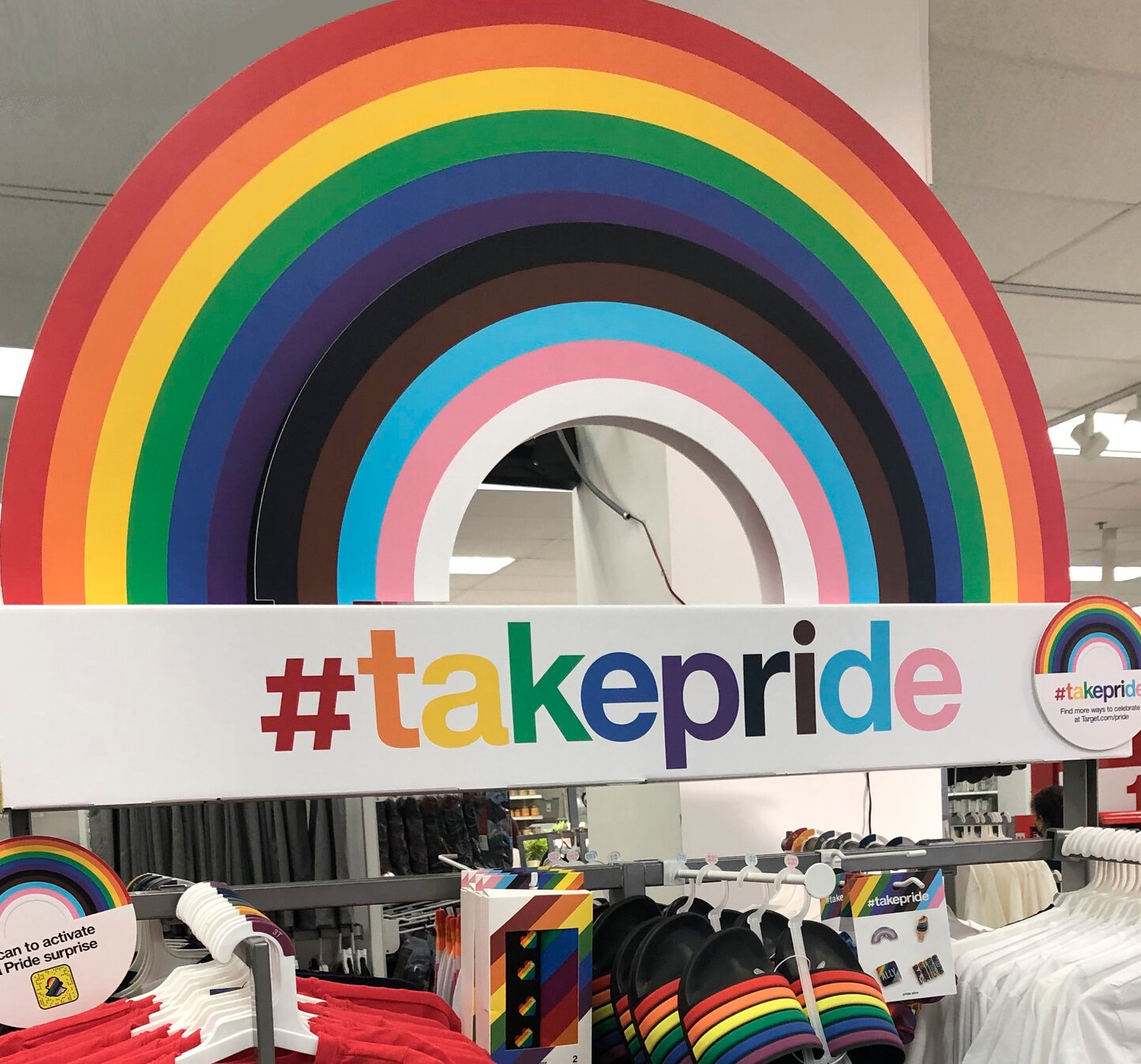
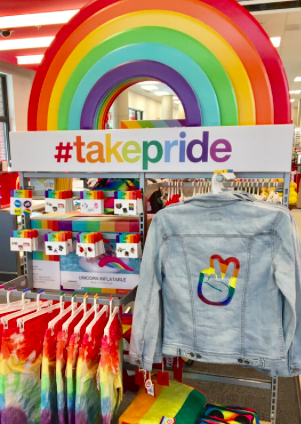
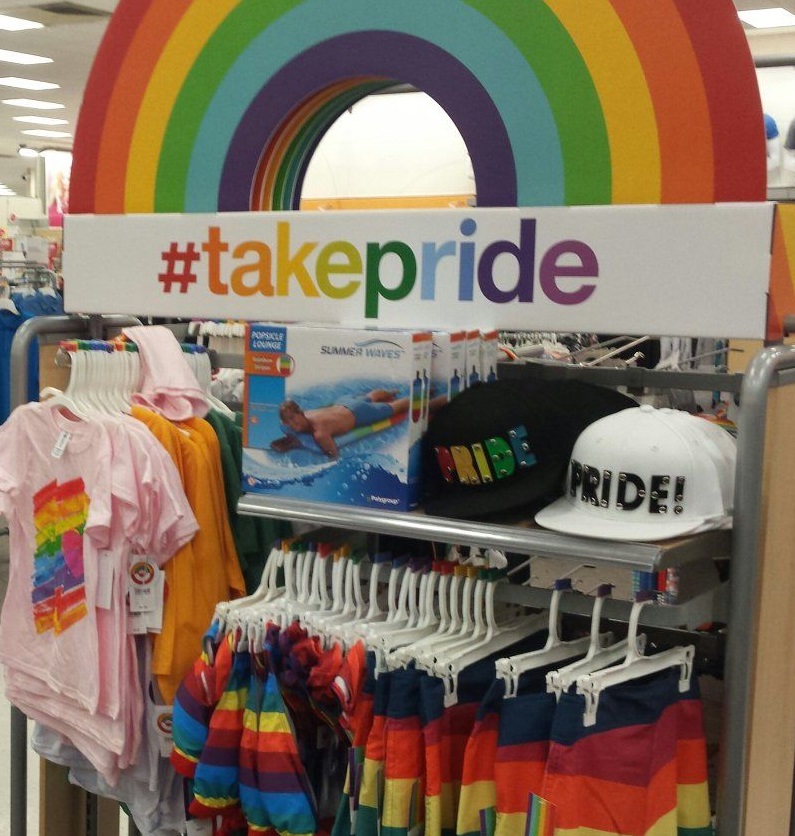
Never March Alone: Pride in London 2023
Warning: Proud Boys Plan to Target Pride Month
Celebrations
Target Stores Removing Some Pride Merchandise After
Anti-LGBTQ Threats to Staff
Tampa Pride Cancels Pride on the River Event Due to
Political Climate
Thousands Hit the Streets of London to Celebrate Pride
Anti-LGBTQ Hate and Extremism Spiked During Pride Month
2023
Target Becomes Latest Company to Suffer Backlash for
LGBTQ Support
Pride Organizers Keep Eye on Drag Laws Ahead of
Festivals
Dear Target: Please Ban the Threatening Customers, Not
Your Pride Products
“Pride Month at Target
is a time of affirmation and solidarity with the LGBTQ
community,” the company says on its website. “Our focus
now is on moving forward with our continuing commitment
to the LGBTQ community and standing with them as we
celebrate Pride Month and throughout the year,” Target
said in a statement.
Target said that customers knocked down Pride displays
at some stores, angrily approached workers and posted
threatening videos on social media from inside the
stores. Target declined to specify which items it was
removing but among the ones that garnered the most
attention were “tuck friendly” swimsuits for trans
women. Target confirmed that it has moved its
Pride merchandise from the front of the stores to the
back in some Southern stores after confrontations and
backlash from shoppers in those areas.
Target’s response to confrontations in its stores is
taking place as state legislatures introduce a record
number of bills targeting LGBTQ individuals. There are
close to 500 anti-LGBTQ bills that have gone before
state legislatures since the start of this year, an
unprecedented number, according to the American Civil
Liberties Union. Those efforts focus on health,
particularly gender-affirming health care for
transgender youth, and education. State legislatures are
pushing to prevent discussions in school regarding
sexuality and gender identity. At least 17 states
have enacted laws restricting or banning
gender-affirming care for transgender minors.
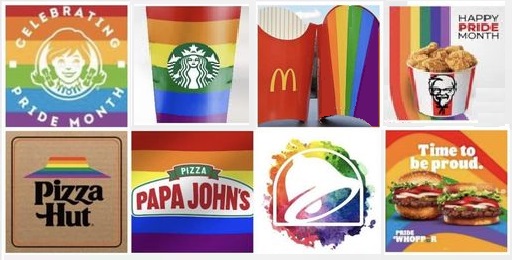
Target’s action comes on the heels of a conservative
backlash against Bud Light, after brewer Anheuser-Busch
promoted the beer on social media last month with
transgender influencer Dylan Mulvaney.
Target, and other retailers including Walmart and H&M
have been expanding their LGBTQ displays to celebrate
Pride month for roughly a decade. This year transgender
issues (including gender-affirming health care and
participation in sports) have been a divisive topic in
state legislatures and the backlash has turned hostile.
[Source: AP, CNN, Reuters, May 2023]
Great Films and TV Shows That Feature Pride Celebrations
Star-Studded LA Pride in the Park
Celebrate Pride All Month Long: 2024
Pride Playlist
Images of Cleveland Celebrating Queer Joy
Video: Nashville Pride
Rhode Island Pride 2024: Shows Us How
It's Done!
Tampa Pride Cancels Pride on the River Event Due to
Political Climate
Pride Organizers Keep Eye on Drag Laws Ahead of
Festivals
Special Pride Message From President and First Lady
Brief Photo History of Queer Pride and
Protest
Kamala Harris is First
Sitting VP to March in Pride Event
Pride Month: Celebrating LGBTQ Joy
Info: Celebrating
the LGBTQ Community
Pride Taking Over Provincetown
Pride Marches From 1969 to Present: Queer History in
Photographs
Defining LGBTQ Pride
We
recognize the resilience and determination of the many
individuals who are fighting to live freely and
authentically. In doing so, they are opening hearts and
minds, and laying the foundation for a more just and
equitable America.
-Proclamation by US President Joe Biden, June 2021
Gay pride or LGBTQ
pride is the promotion of the self-affirmation, dignity,
equality, and increased visibility of lesbian, gay,
bisexual, transgender, and queer (LGBTQ) people as a
social group. Pride, as opposed to shame and social
stigma, is the predominant outlook that bolsters most
LGBTQ rights movements.
Ranging from solemn to carnivalesque, pride events are
typically held during LGBTQ Pride Month or some other
period that commemorates a turning point in a country's
LGBTQ history. Some LGBTQ pride events include parades
and marches, rallies, commemorations, community days,
dance parties, and festivals.
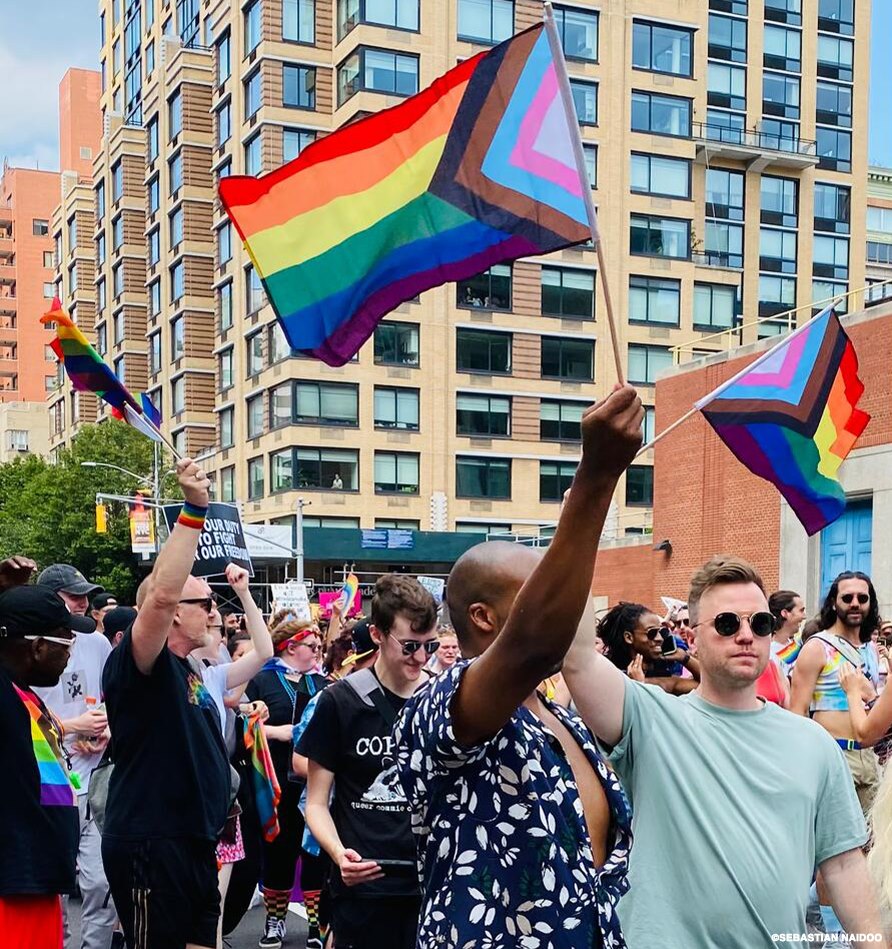 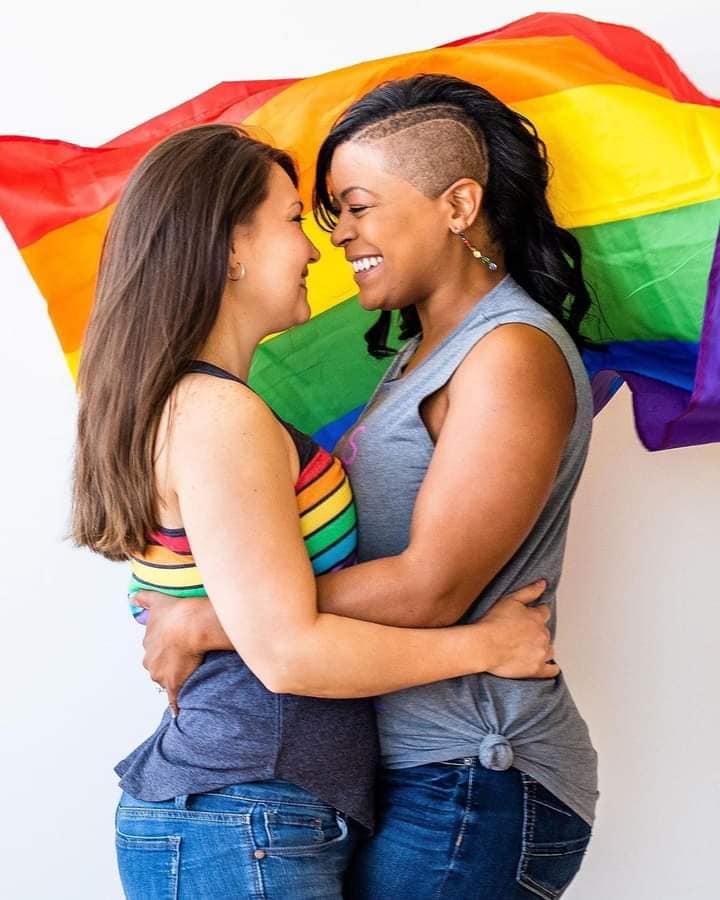
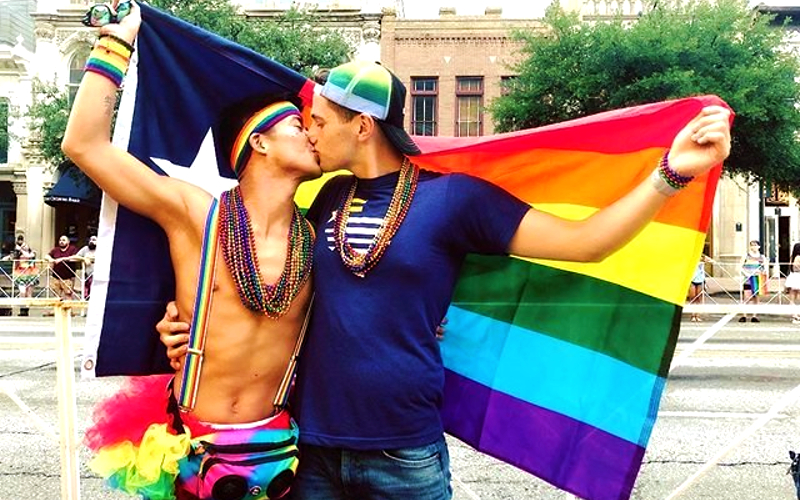
Here’s Your Gay Pride Calendar 2024
Billy Porter Delivers Powerful Speech at Miami Beach
Pride
HRC: Pride Started With Protest
Rhode Island Pride 2024: Shows Us How
It's Done!
Pride Parade Survival Guide
LGBTQ Pride Anthems
Fun Ways to Celebrate Pride at Home
Birmingham Pride Parade
Retrospective: Celebrities
at Pride Events
Pride Started With a Riot: Remembering Stonewall
Celebrating Pride in New Orleans 2023
LGBTQ
Pride: Definition and History
Never March Alone: Pride in London 2023
Anti-LGBTQ Hate and Extremism Spiked During Pride Month
2023
Meaning of Pride: Song by
Drag Queen Nina West
Celebrating LGBTQ
Trailblazers
The Power of Pride
Vox: LGBTQ Pride Explained
Info: LGBTQ Protests and
Demonstrations
Gay Pride: Fight Song
We Stand United: World Pride Song
Top Ten Best Pride Festivals
Every
June, communities across the world celebrate Pride, also
known as “Gay Pride” or “LGBTQ Pride.” For many it’s a
celebration of identity, representing freedom of
expression and freedom from social oppression. For
others Pride represents a time in which they can watch
from afar those who have been able to live their lives
in an “out and proud” way. For people not in the LGBTQ
communities, the month’s events may represent something
different.
LGBTQ Pride began as a movement to solidify the rights
and existence of lesbian, gay, bisexual, transgender and
queer people. The Civil Rights Movement of the
1950s-1960s (in which Black communities fought for
the same legal and civil rights of their white
counterparts) spawned its creation.
There are differing stories as to how LGBTQ Pride
actually began, yet people commonly think it originated
in New York City. Like other activist movements, the
modern gay liberation or civil rights movement included
violent interactions with police. Most people think of
the Stonewall Rebellion (also referred to as riots) as
the catalyst for the modern march for civil rights for
LGBTQ folks.
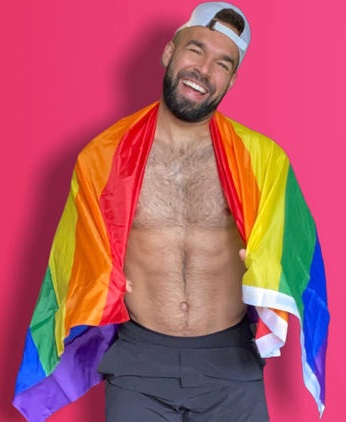
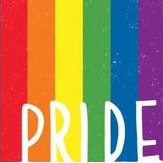
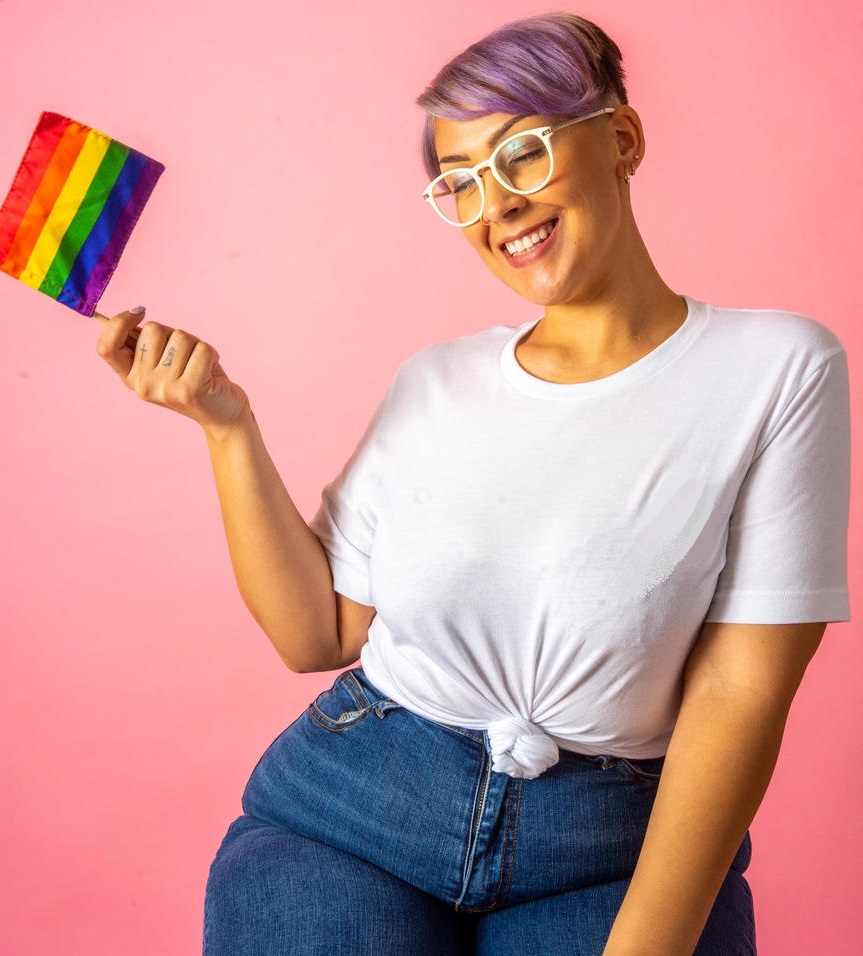
City of Baltimore Celebrates 50 Years of Pride
Advocate Mag: Why Do You Have to Say
They're Gay?
Pride 2020: Still We
Calendar: Guide to Pride Reimagined
Star-Studded LA Pride in the Park
Info: Celebrating LGBTQ Celebrities
June 2020: Celebrating LGBTQ Pride From a Social
Distance
Global Pride Event:
Uniting Groups After Cancelled Parades
LGBTQ Protests: In Praise
of Gay Bars
Info: Celebrating LGBTQ History
Evolution of the Gay Pride
Parade
LGBTQ People Have Been Marching Every June for 50 Years
Parades Might Get
Canceled, But Pride Never Will Be
How to Find LGBTQ Pride
When the Party Goes Virtual
Will Pride Pageantry Perk Up a Pensive Nation?
Celebrating Los Angeles Pride 2022
Essential Gay Anthems Perfect for Pride
Month
Back in
the 1960s, the Stonewall Inn, a now historic site thanks
to former President Obama, was a popular hangout for
LGBTQ folks in New York City. It represented that safe
space in which people with varying sexual and gender
identities could come together, celebrate themselves,
and live boldly. While New York City has long been a
mecca for the “others,” the misfits, and all else, it
was still difficult to be an LGBTQ person then.
Riots broke out at the Stonewall Inn when police raided
the bar in an effort to accost or arrest its patrons.
Violence ensued. After that day, people gathered and
marched through the streets of New York City demanding
equal rights and treatment from the government and
police. The dam of oppression against LGBTQ peoples had
been broken for the first time in American history.
Those marches served as the precursor to the marches
around the world that now typically include lots of
dancing, fun, love, and celebration of self and
community.
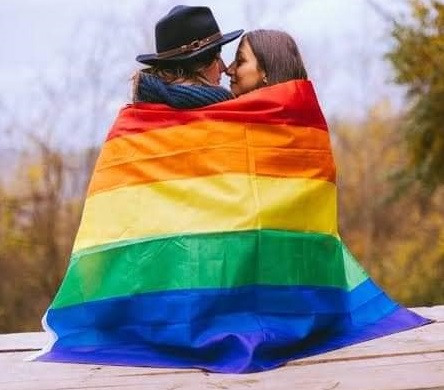
P: Perseverance — Progressing forward in the face of
difficulty or oppression
R: Resilience — Toughness, bouncing back from pain, and
continuing to press on
I: Inclusion — Embracing the human desire to be a part
of something greater than one’s self
D: Determination — Continuing to fight unwaveringly for
rights and dignity in the face of hatred,
judgment, ignorance, and bigotry
E: Expression — Allowing one’s self to be free to live
and exist as one wants
Gay Pride: Fight Song
Pride Month: Celebrating LGBTQ Joy
History of LGBTQ Pride
Music, Movies, Media:
Celebrate LGBTQ Pride
Images of Cleveland Celebrating Queer Joy
The Power of Pride
Essential Gay Anthems Perfect for Pride
Month
This is Me: Celebrate Pride Month
Why is it Important to Celebrate LGBTQ Pride?
Flying with Pride: Colorful Guide to LGBTQ Flags
Great Films and TV Shows That Feature Pride Celebrations
Queer History in Photographs: Pride
Marches From 1969 to Present
CNN: Pride Month
Celebrate Pride With LGBTQ
Celebrities
Brief Photo History of Queer Pride and
Protest
Presidential Proclamation: LGBTQ Pride Month 2021
Pride Wristband Resources
Historic Pride Photos From Los Angeles in
the 80s
LGBTQ Pride 2021
Including
masking up, following local guidelines, and practicing
gratitude
for the resilience of
Pride, in whatever form it takes.
While the meaning of
LGBTQ Pride is always influx, the past year has
transformed the LGBTQ demonstration in ways that would
have been unimaginable to those Stonewall Inn
demonstrators over 50 years ago. In 2020, celebrations
around the world were either canceled or shifted to
virtual events to fight COVID-19, with drag performers
and LGBTQ artists showcasing skills virtually via Zoom.
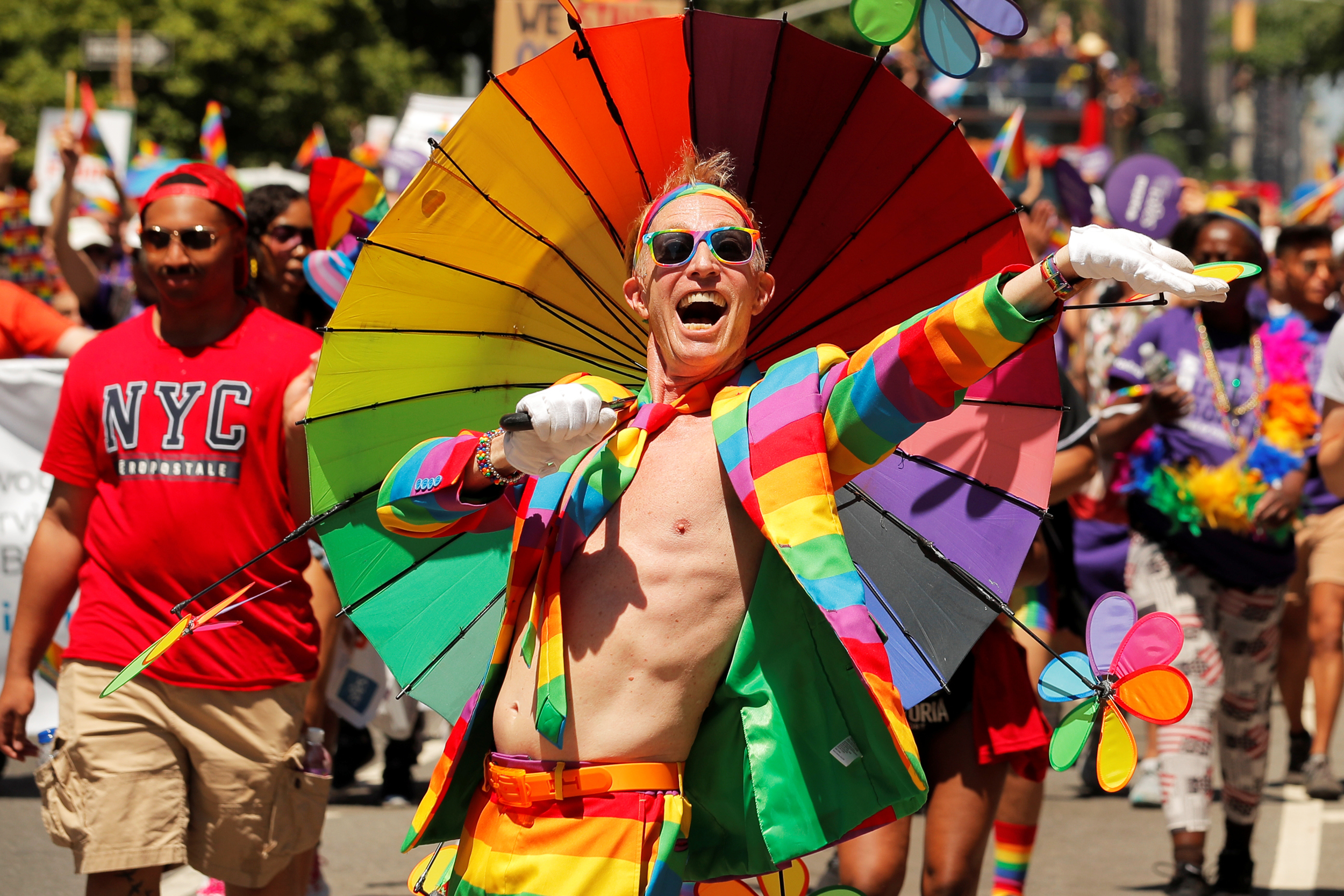
Pride is More Than a Parade
Celebrate Pride With LGBTQ
Celebrities
Fun Ways to Celebrate Pride at Home
Advocate Mag: Why Do You Have to Say
They're Gay?
Celebrating Pride in New Orleans 2023
World Wide Pride Celebrations
Dallas: Home of the Most Rainbow Crosswalks
50th Anniversary: The
Revolution May Have Finally Arrived
Gay Songs: Ultimate Pride Playlist
This is Me: Celebrate Pride Month
Pride Parade Survival Guide
Info: Protest, Riot, Demonstration, Revolution
Gay Pride: Fight Song
As plans altered online, cultural events also
intervened. Last summer’s Black Lives Matter protests
intersected with June, galvanizing thousands of LGBTQ
folks from Los Angeles to New York City to leave
quarantine and take to the streets in solidarity against
police brutality. Support for Black transgender lives
became an even louder rallying cry, as violence against
that community escalated even higher in a pandemic year.
And not every Pride happening was positive. Party
promoters in Atlanta, for example, took advantage of the
growing frustration with lockdown to plan unofficial
parties in unsafe underground settings.
To say the least, it has been a “challenging” year for
LGBTQ gatherings, says Jeff Consoletti, the founder and
principal of JJ|LA, a prominent event company behind LA
Pride. Amid this upheaval, JJ|LA engaged in its own
seismic shifts for survival. The business invested in
its ability to create online content and production as
gatherings that were once anchored in a ballroom
transitioned to digital spaces.
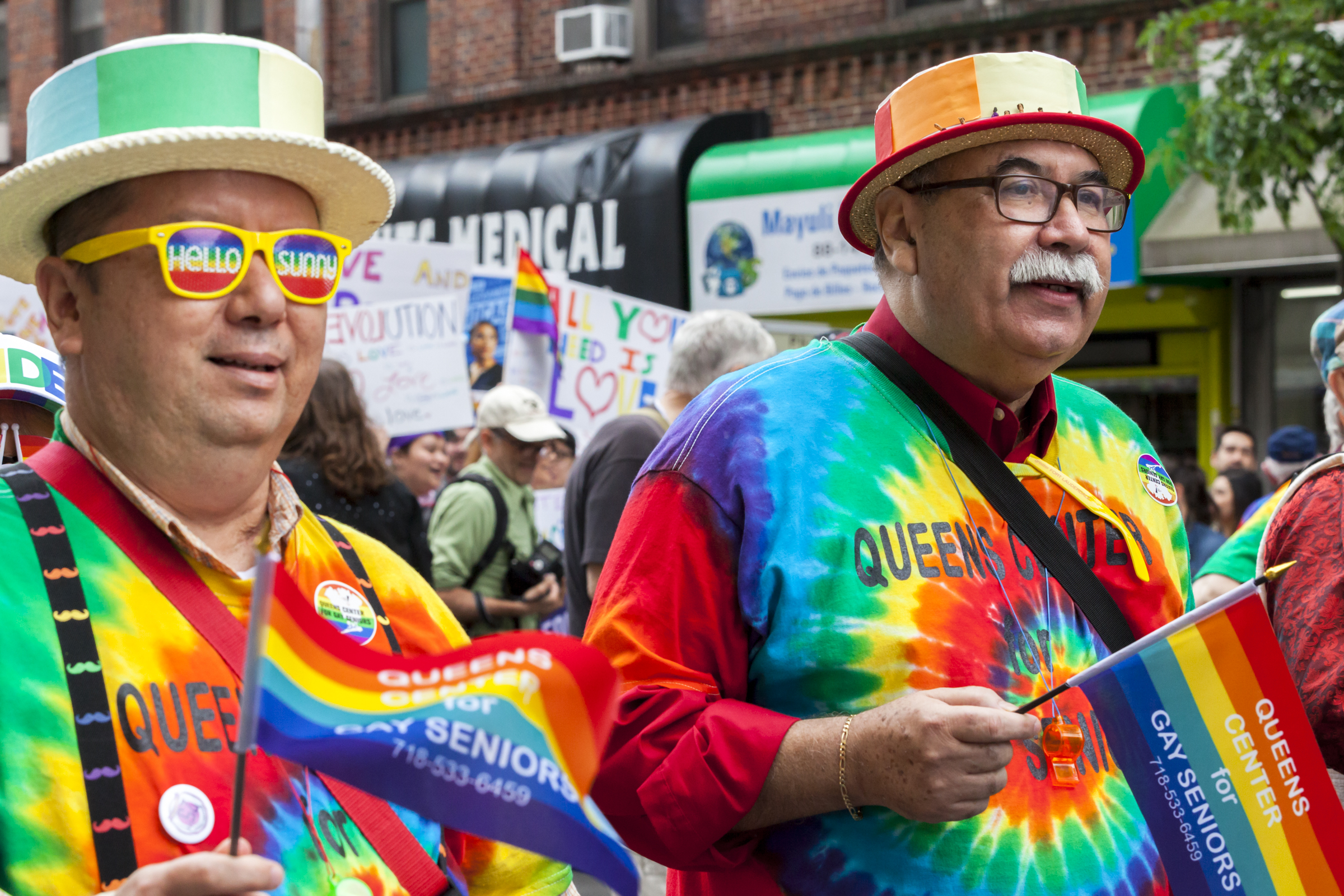
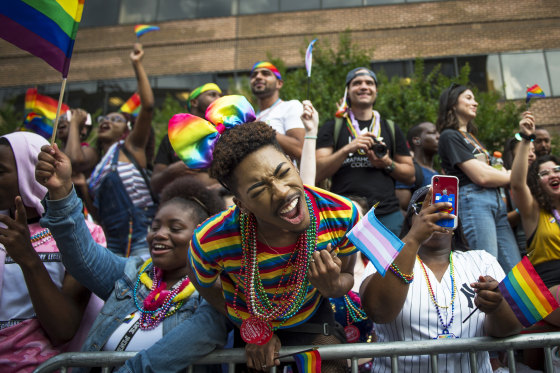
Music, Movies, Media:
Celebrate LGBTQ Pride
Pride Month: Celebrating LGBTQ Joy
Images of Cleveland Celebrating Queer Joy
Info: Celebrating the
LGBTQ Community
Pride Wristband Resources
Great Films and TV Shows That Feature Pride Celebrations
Virtually or In-Person:
Tips for Celebrating Pride
Retrospective: Celebrities
at Pride Events
Gay Songs: Ultimate Pride Playlist
Iconic Queer Images
History: First Gay Pride Parades
Pride
Primer
The results of its efforts demonstrate how there can be
diversity, innovation, and fun in digital spaces. At
Equality California’s Golden State Equality Awards last
fall, for example, JJ|LA created “cinematic,
documentary-style” videos chronicling how the
organization’s grassroots work changed in a pandemic.
Hosted by Pose’s Angelica Ross and featuring honorees
Pete and Chasten Buttigieg and Norman Lear, it also
expanded the organization’s message and reach. Held
statewide for the first time, the fundraiser promoted
the election of progressive candidates while raising
over $1.7 million.
Another JJ|LA event, Point Honors Los Angeles, was
designed like a “video game.” Guests could virtually
tour “Point Foundation University” and learn about the
foundation’s mission of helping LGBTQ scholars.
Angelenos even had at-home meal delivery, a tasteful
combination of in-person and virtual experiences.
While the tools have changed, the aim is the same. “An
event is really a story,” Consoletti shares.

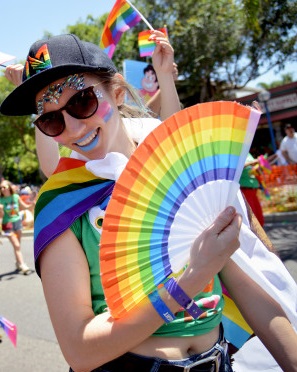
Gay Pride: Fight Song
Flying with Pride: Colorful Guide to LGBTQ Flags
Evolution of the Gay Pride
Parade
Celebrate Pride With LGBTQ
Celebrities
This is Me: Celebrate Pride Month
We Stand United: World Pride Song
Goal of the Powerful is to Extinguish our Light: Joy
is Protest, Celebration is Dissent
NPR: The Commercialization of Pride Month
Meaning of Pride: Song by
Drag Queen Nina West
Essential Gay Anthems Perfect for Pride
Month
Fun Ways to Celebrate Pride at Home
Celebrating LGBTQ
Trailblazers
The Power of Pride
As vaccinations ramp up and restrictions ease as June
nears, real-life gatherings will return in some form.
But events will forevermore be different, predicts
Consoletti. New pandemic rituals like menu QR codes may
become the norm. And Pride, in a new hybrid form, will
march on, as it must. “I think that there is a huge need
for Pride to come back in some capacity,” he says.
In 2021, many smaller Pride celebrations will
undoubtedly be canceled. It’s an ideal time to donate to
beloved Pride organizations to sustain them during this
arduous time. But larger Pride events, like those in New
York and Los Angeles, are persevering with plans that
change alongside city guidelines. There will still be
virtual celebrations. But this year, it’s possible for
several vaccinated friends to gather and experience them
together. Notably, Adam Lambert (our cover star) will
“curate” Pride’s Stonewall Day, selecting musical
performances and special appearances for the streaming
June 6 fundraiser.
Some Prides will have an official in-person element,
Consoletti predicts. However, don’t expect a return to
packed parades. Participants must have “a little more
patience” and expect a different, spaced-out experience,
like drive-in drag shows and screenings, to avoid a
“super-spreader event.” Proof of vaccinations may even
be a requirement for some events. But respect for the
health of others (and one’s self) is still paramount.
Mask up, follow local guidelines, and practice gratitude
for the resilience of Pride, in whatever form it takes.
This past year has “allowed us to reflect and learn in
different ways,” Consoletti says. “I kind of appreciate
Pride again.”
[Source: Daniel Reynolds, Advocate Magazine, May 2021]
CNN: Pride Month
Great Films and TV Shows That Feature Pride Celebrations
Advocate Mag: Why Do You Have to Say
They're Gay?
HRC: Pride Started With Protest
Brief Photo History of Queer Pride and
Protest
Top Ten Best Worldwide
LGBTQ Pride Festivals
Pride Parade Survival Guide
LGBTQ Pride Anthems
Gay Songs: Ultimate Pride Playlist
Iconic Queer Images
History: First Gay Pride Parades
Complete Guide to Queer Pride Flags
Reuters: Washington DC Gay Pride Draws Thousands
Advocate: Over 100 Photos From Palm Springs Pride
World Pride Celebration
NYC 2019
Iconic Queer Images
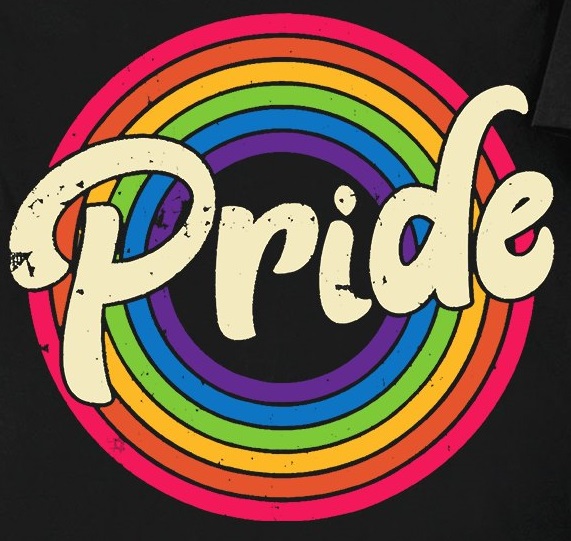
LGBTQ Pride Month
I call
upon all Americans to observe LGBTQ Pride Month by
fighting prejudice and discrimination in their own lives
and everywhere it exists.
-Proclamation by US President Barack Obama, May 2010
LGBTQ Pride Month occurs in the United
States to commemorate the Stonewall riots, which
occurred at the end of June 1969. As a result, many
pride events are held during this month to recognize the
impact LGBTQ people have had in the world.
Two presidents of the United States have officially
declared a pride month. First, President Bill Clinton
declared June "Gay & Lesbian Pride Month" in 1999 and
2000. Then from 2009 to 2016, each year he was in
office, President Barack Obama declared June LGBTQ Pride
Month. Donald Trump became the first Republican
president to acknowledge LGBTQ Pride Month in 2019, but
he did so through tweeting rather than an official
proclamation.
Beginning in 2012, Google displayed some LGBTQ-related
search results with different rainbow-colored patterns
each year during June. In 2017, Google also included
rainbow colored streets on Google Maps to display Gay
Pride marches occurring across the world.
At many colleges, which are not in session in June,
LGBTQ pride is instead celebrated during April, which is
dubbed "Gaypril".
Is Pride a Protest or a Party?
Wikipedia: Pride Parades
Images of Cleveland Celebrating Queer Joy
San Francisco Gay Pride Parade 1987
LGBTQ Pride Parades Around
the World
Pride
Primer
Pride Wristband Resources
Evolution of the Gay Pride
Parade
Goal of the Powerful is to Extinguish our Light: Joy
is Protest, Celebration is Dissent
Celebrate Pride With LGBTQ
Celebrities
Essential Gay Anthems Perfect for Pride
Month
This is Me: Celebrate Pride Month
Why is it Important to Celebrate LGBTQ Pride?
We Stand United: World Pride Song
Historic Pride Photos From Los Angeles in
the 80s
Pride Month: Celebrating
LGBTQ Joy
Imagine your high school baseball team banning you from
playing. Your local DMV barring you from changing the
name on your driver's license. Your neighbors darting
their eyes away from you in public. The transgender
community faces hardships like these on a daily basis –
not to mention a wave of discriminatory legislation.
Trans people are like Sisyphus, forever barreling a
boulder up a never-ending hill.
But what if that hill
wasn't so intimidating after all, and they were given
encouragement, smiles and support along the way? In the
face of trauma, trans people (and the LGBTQ community at
large) often persevere and find joy. Experts say the two
are inextricably linked, and putting emphasis on LGBTQ
joy this Pride month is especially crucial given the
wave of persecution against the community.
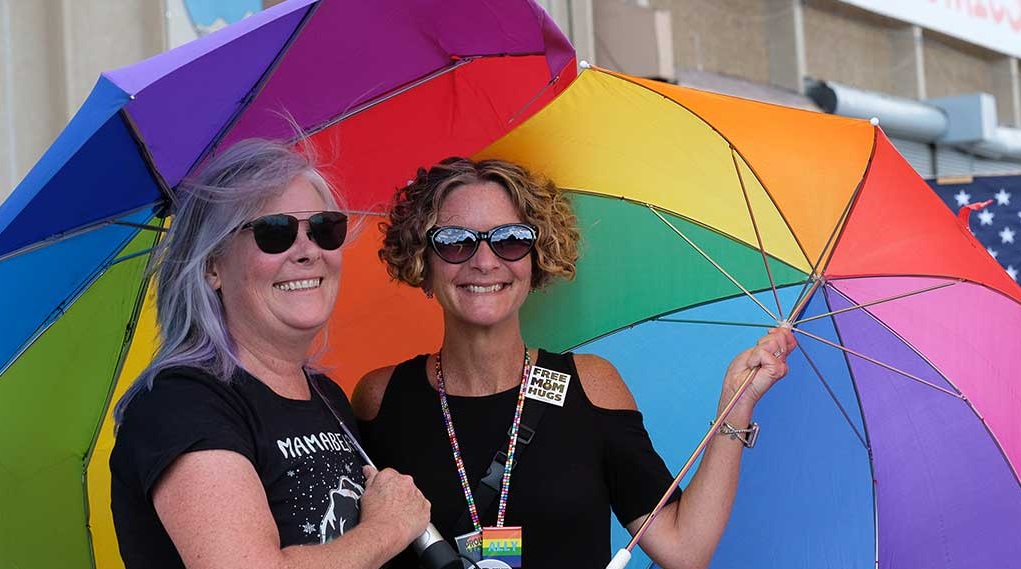
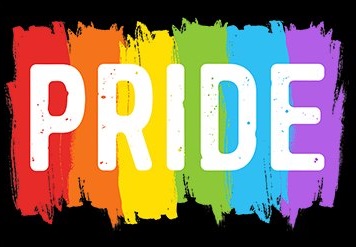
Gay Pride: Fight Song
Great Films and TV Shows That Feature Pride Celebrations
Pride Started With a Riot: Remembering Stonewall
YouTube: Los Angeles Pride Parade Highlights
Gay Pride Parades: Identity, Protest, Tradition
50th Anniversary: The
Revolution May Have Finally Arrived
LGBTQ People Have Been Marching Every June for 50 Years
Advocate: Photos From Nashville Pride Parade
LGBTQ Pride Parades Around
the World
Pride 2019: Love Wins
"It is not only important
but essential to celebrate," says Sara Warner, director
of Cornell University's LGBTQ studies program. "Our
pleasure is our resistance to the hate, homophobia/transphobia,
and fearmongering aimed at LGBTQ individuals and
communities."
Joy will help the community thrive, but first they must
survive – especially younger people. According to The
Trevor Project, 42% of LGBTQ young people "seriously
considered" suicide this past year. More than half of
them were transgender and nonbinary.
At least 28 transgender or gender nonconforming people
have been killed in 2021, according to the Human Rights
Campaign. Black and Latina transgender women are most at
risk.
"Our survival depends on us finding ways to create joy
for ourselves, ways to laugh together and sharing
insights that can only come from truly knowing
ourselves," says Alex Schmider, GLAAD's associate
director of transgender representation.
June, which is Pride Month, is as good a time as any to
explore joy. Pride started as a protest outside the
Stonewall Inn in 1969 in New York. The word "protest"
may not evoke joyful images – but it should.
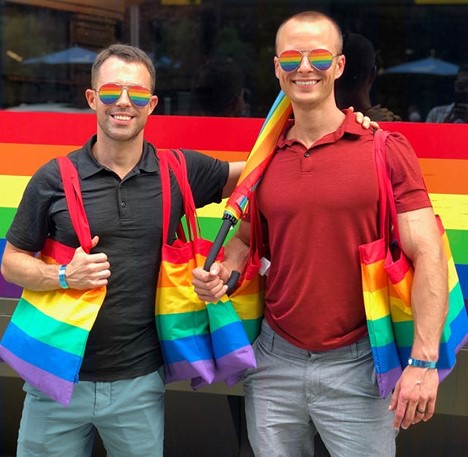
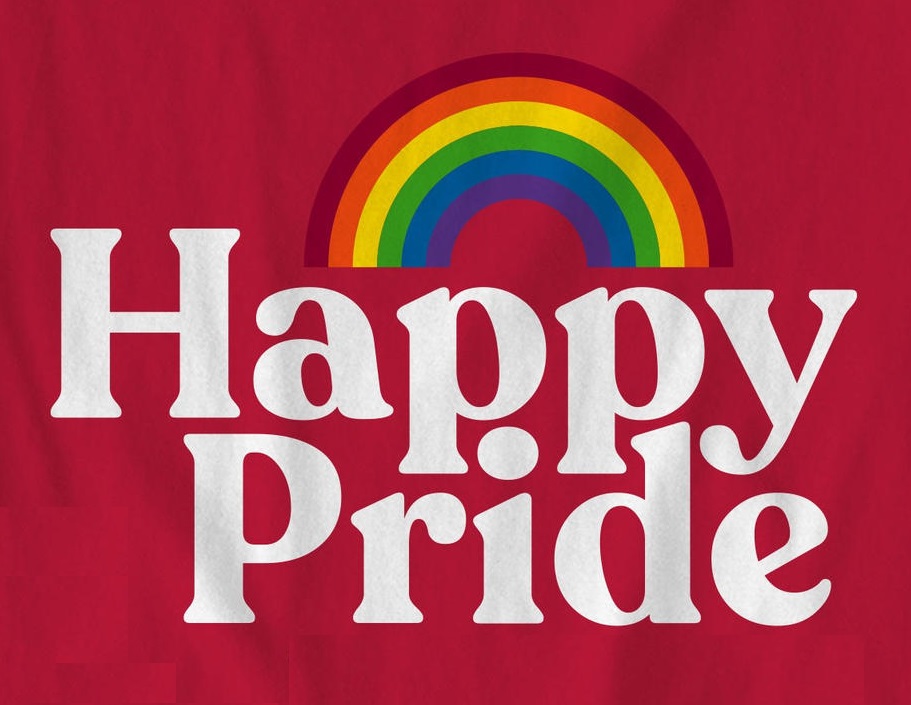
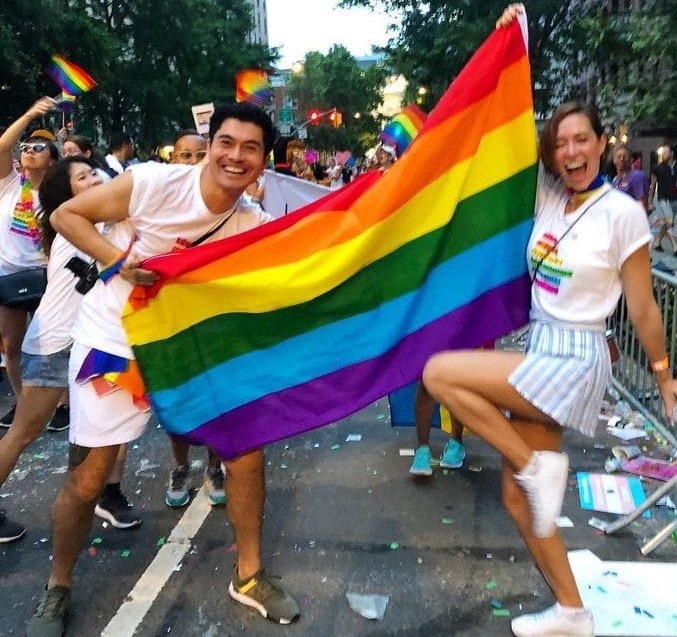
Advocate Mag: Why Do You Have to Say
They're Gay?
Celebrating Pride in New Orleans 2023
Tips for Celebrating Pride Month at Home
In Gay We Trust: How to Have Pride in a Pandemic
Pride Everywhere: Trevor Project ft. Demi Lovato
Why is it Important to Celebrate LGBTQ Pride?
Solidarity: Los Angeles Pride Supports Black Lives
Matter
The Goal of the Powerful is to Extinguish our Light: Joy
is a Protest, Celebration is Dissent
New York City Pride
COVID-19 Version of Los Angeles Pride
LGBTQ Pride Anthems
"We know that when the first brick was thrown at
Stonewall, that was also portrayed as angry, or
antagonist, or resistance and rising up. But that also
was an act of joy," says SA Smythe, an assistant
professor in the Department of African American Studies
at UCLA.
Warner adds: "When police, outfitted with tactical gear,
stormed the Stonewall Inn, patrons – many of them
homeless youth and trans women of color – fought back
with the most potent weapons they had: their sense of
humor. Some linked arms in a chorus line and sang dirty
songs, while others led police on a wild goose chase
through the byzantine streets of the West Village."
Pride provides a time to celebrate and sit with this
history, surrounded by fellow LGBTQ people.
"This is exactly the time where we find queer kinship
and queer causes and celebrate that collectively,"
Smythe says. "Because we don't just then get joy, we
also get to figure out what it is that we're about, how
we move in solidarity with each other. And that's a
super-joyous exercise."
The idea of finding joy amid trauma is linked to the
civil rights movement and Black Lives Matter. "For
Black, Indigenous, and LGBTQ people of color, oppression
is compounded by the violence of white supremacy,
systemic discrimination and anti-Black racism," Warner
says.
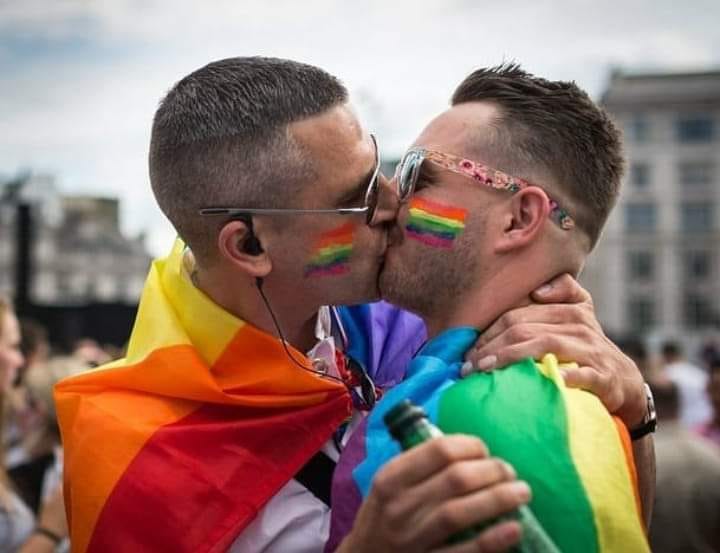
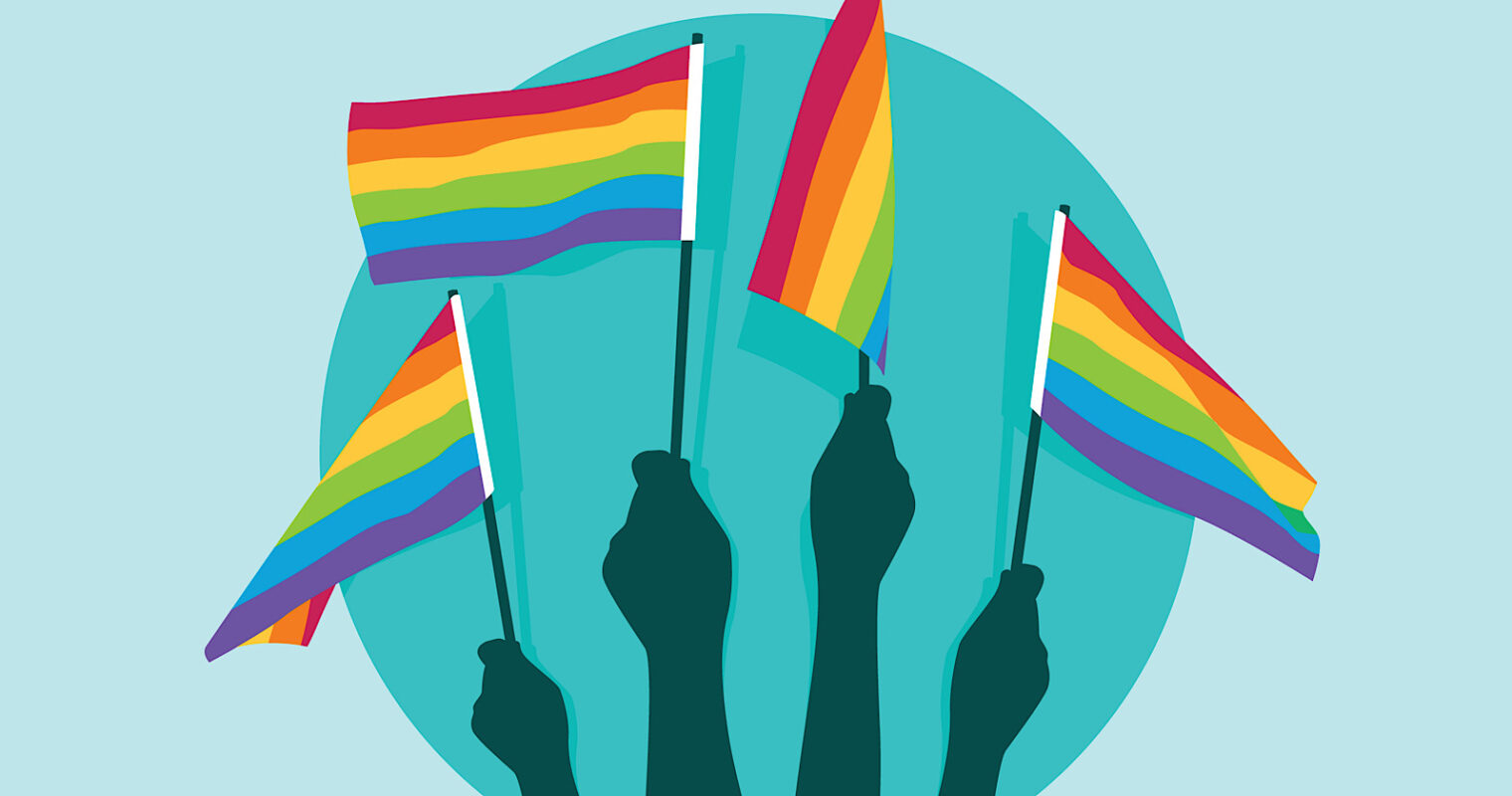
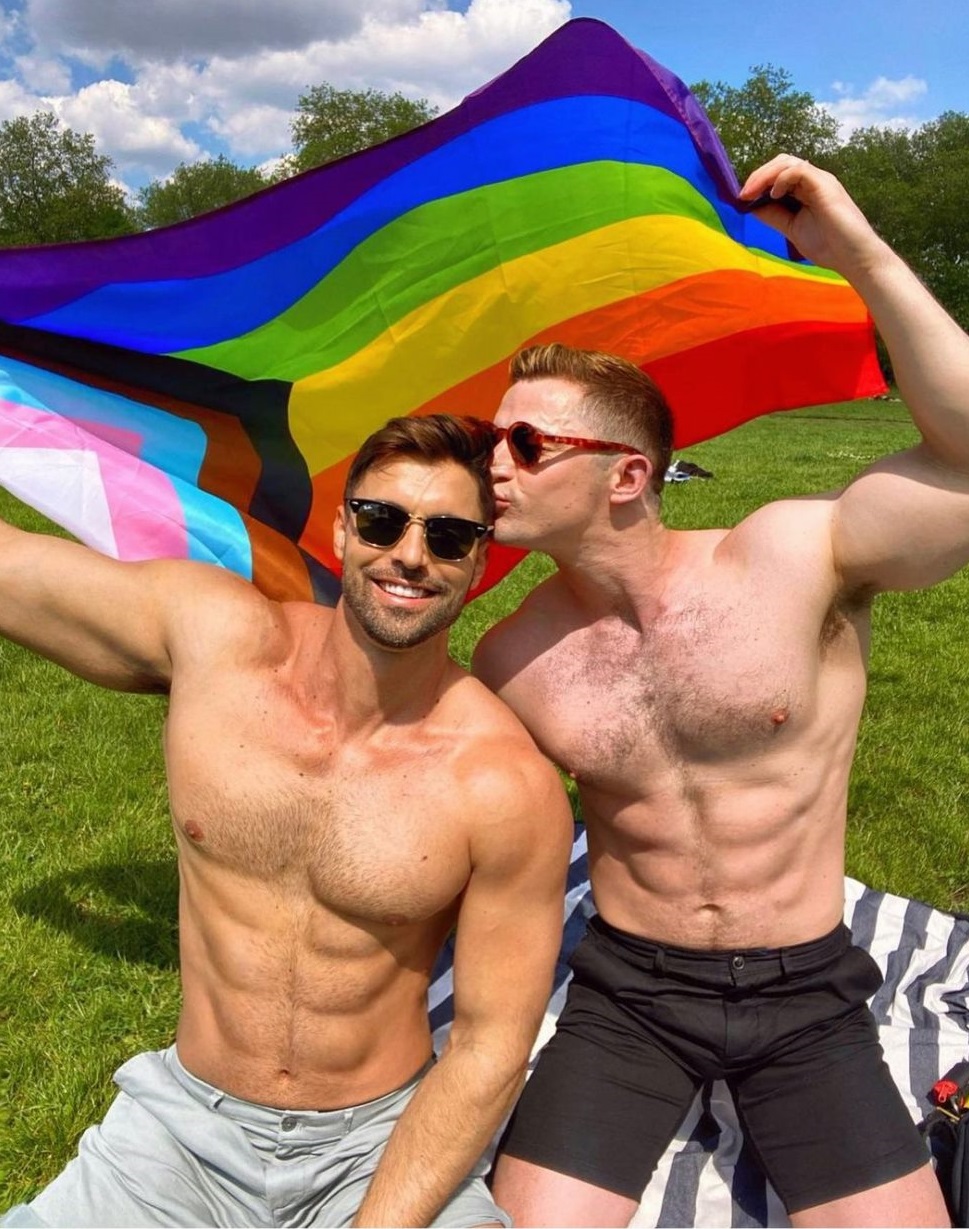
Wikipedia: Pride Parades
LGBTQ Pride Parades Around
the World
Evolution of the Gay Pride
Parade
Celebrate Pride With LGBTQ
Celebrities
Fun Ways to Celebrate Pride at Home
Pride is More Than a Parade
Gay Pride: Fight Song
Images of Cleveland Celebrating Queer Joy
50th Anniversary: The
Revolution May Have Finally Arrived
Fifty Year History of LGBTQ Pride
Armed With Pride: LGBTQ People March into Battle
LGBTQ People Have Been Marching Every June for 50 Years
Pride March Images:
1969-Present
It's important to see LGBTQ joy represented in TV,
movies. Don't let the rainbow flags fool you: Joyful
representations of queer people in entertainment are
scarce. TV series and movies focusing on transgender
people historically home in on tragedy – think "Boys
Don't Cry" and "Dallas Buyers Club." The same can be
said for the greater LGBTQ community, as with "Brokeback
Mountain."
"I would love to see more programming that celebrates
gaiety, joy and pleasure," Warner says. "With so many
publishing outlets, television, channels, subscription
series and public modes of broadcast, this is
happening."
Series like "Saved by the Bell" on Peacock and "First
Day" on Hulu are challenging this negative narrative,
according to Schmider. "When facing a world that makes
it so unnecessarily challenging to be ourselves, seeing
trans joy, laughing together, appreciating who we are,
can help lead us through these times," Schmider says.
"Inviting people to connect with our experiences and
laugh with us, not at us, which has historically been
the case."
"Grey's Anatomy" star Jake Borelli watched all of "RuPaul's
Drag Race" during the pandemic and is always looking for
LGBTQ entertainment to consume. He also starred in the
Freeform's movie "The Thing About Harry" last year.
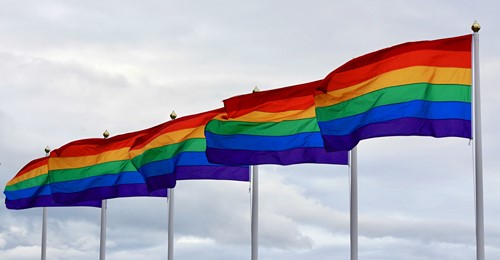
LGBTQ People Have Been Marching Every June for 50 Years
Armed With Pride: LGBTQ People March into Battle
Pride 2019: Love Wins
Celebrating Vermont Pride: A State of
Freedom and Unity
Pride Everywhere: Trevor Project ft. Demi Lovato
Pride Started With a Riot: Remembering Stonewall
Why is it Important to Celebrate LGBTQ Pride?
Advocate Mag: Why Do You Have to Say
They're Gay?
"That, to me, was the perfect amount of joy," Borelli
said of the film. "It was the perfect queer story, in
the sense that it was about queer people, but then it
didn't deal with shame and didn't deal with coming out.
It dealt with love. And I hope that more movies like
that get made or more larger story arcs on television
shows. That would be wonderful."
As in real life, joy and heartbreak intertwine in
complicated knots. "Joyful queer content can contain
pain and trauma. It is important to acknowledge our
history," Warner says. "The issue is how we address
injury and how we celebrate our flourishing in spite of
this."
Schmider agrees and says more diversity behind the
scenes will only push that notion further.
Watching a trans kid hit a home run onscreen could fuel
further acceptance offscreen.
"Trans people, and everyone, need to see us living our
lives and thriving despite the harm being propelled onto
us, showcasing our resilience and our refusal to bow and
bend to the pressures of being inauthentic to
ourselves," Schmider says.
[Source: David Oliver, USA Today, June 2021]

Brief Photo History of Queer Pride and
Protest
Pride Month: Celebrating LGBTQ Joy
How LGBTQ Pride Will March On In 2021
History of LGBTQ Pride
Essential Gay Anthems Perfect for Pride
Month
Music, Movies, Media:
Celebrate LGBTQ Pride
The Power of Pride
This is Me: Celebrate Pride Month
CNN: Pride Month
Celebrate Pride With LGBTQ
Celebrities
Pride Started With a Riot: Remembering Stonewall
June 2020: Virtual LGBTQ Pride Month
Pride is much more than an event. It is a way of
life.
Parades might get canceled. But pride never will
be.
The first Pride event wasn’t a parade. It was a riot and
a rebellion that led to a revolution.
LGBTQ Pride Month is celebrated in June to commemorate
the anniversary of the 1969 Stonewall Riots in New York.
The uprising is considered by many to be the turning
point in the gay rights equality movement. While the
COVID-19 pandemic has forced the cancellation of
regularly scheduled festivities around the world, from
New York and San Francisco to London and Toronto, you
can’t cancel Pride, because Pride is within all of us.
Because of the COVID-19 pandemic, many of this year’s
celebrations around the country have been reimagined for
safe social distancing measures. There won’t be rainbow
floats in the streets, but Pride will still happen —
online.
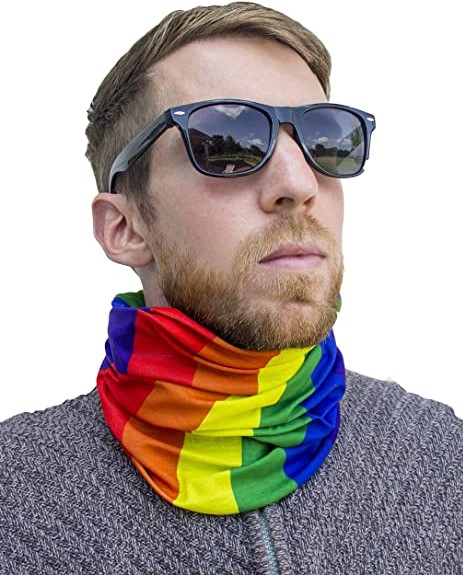
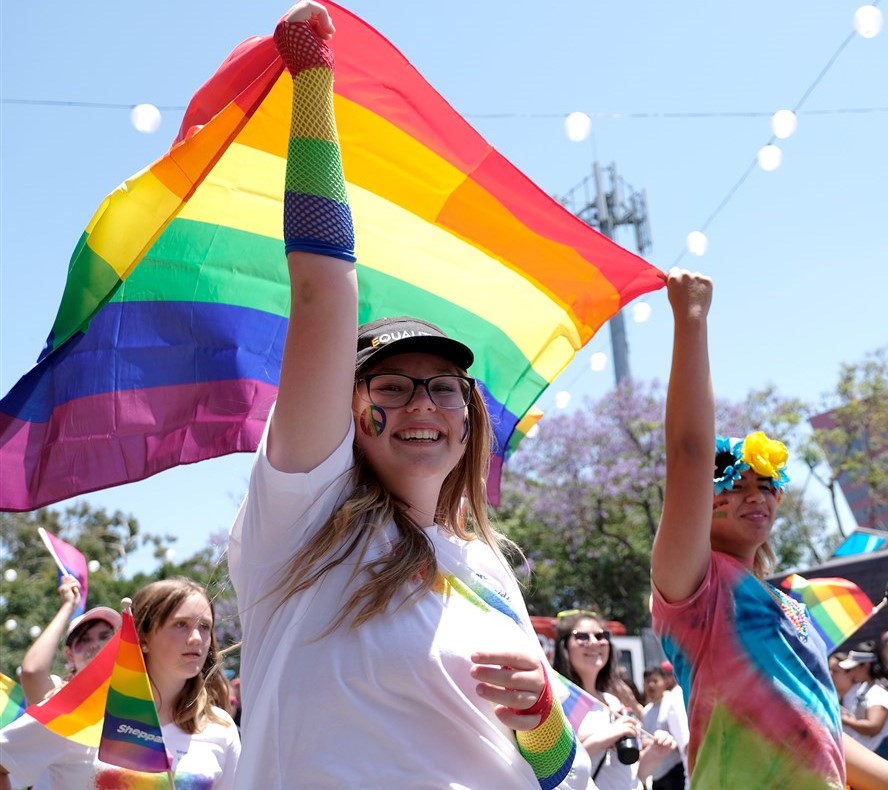
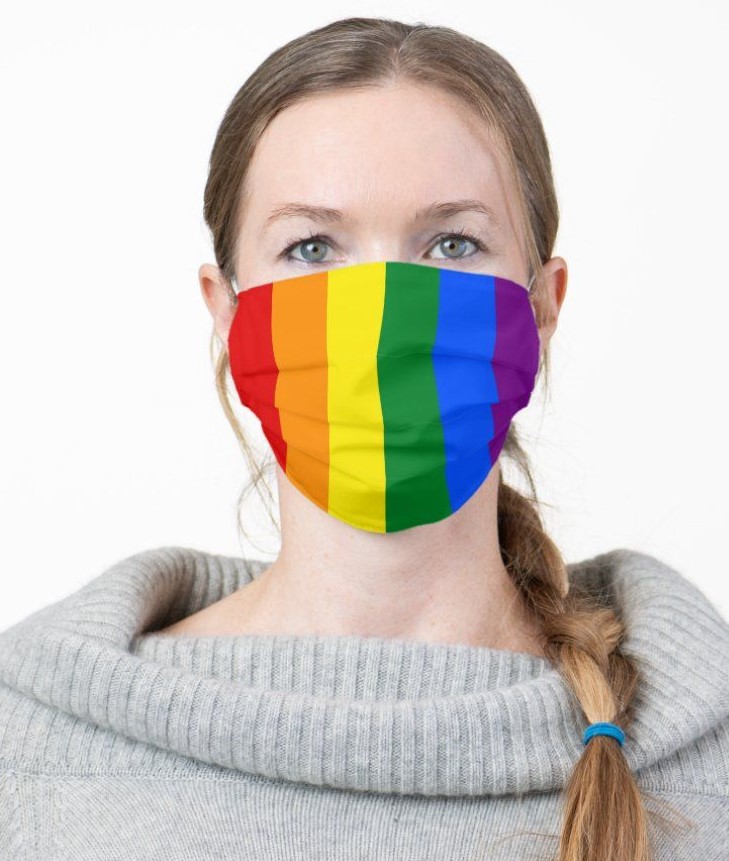
50th Anniversary: The
Revolution May Have Finally Arrived
Parades Might Get
Canceled, But Pride Never Will Be
Chicago Pride Postponed
LGBTQ Allies and Advocates
Raise Funds for Black Trans Lives
Happy Pride: What Do We
Have to Be Proud Of?
Pride is On: Celebrating Virtually
What Will LGBTQ Pride Mean During the COVID-19 Pandemic?
Reimagining Pride During COVID-19 Pandemic
Seattle Pride
Hannah and Sadie: Pride Celebration
How Will Pride Month Be
Different in 2020?
Pride 2020: Guide to Celebrations Under COVID 19
With hundreds of gay
pride celebrations around the world canceled or
postponed due to COVID-19, event organizers are teaming
up for virtual alternatives. Facing a wave of
cancellations amid the global pandemic, LGBTQ activists
are scrambling to reimagine gay pride events, some of
which are among the biggest in-person gatherings in the
world. With more and more in-person pride events being
canceled and postponed daily, organizers are forced to
be innovative and are exploring other options.
The LGBTQ community
is creative and strong, with a long history of turning
tragedy and struggle into triumph and affirmation. Look
no further than the anti-racism demonstrations across
the country in recent days as evidence that making
history oftentimes means making people uncomfortable.
This year is no different. Activists, artists, drag
performers, politicians, filmmakers, community members,
fitness gurus and more have all found ways to reimagine
Pride as a virtual gathering that leaves no one behind.
And the silver lining is that you don’t need to be a
local to represent like one.
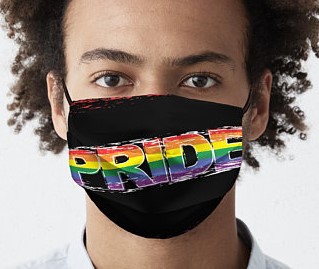
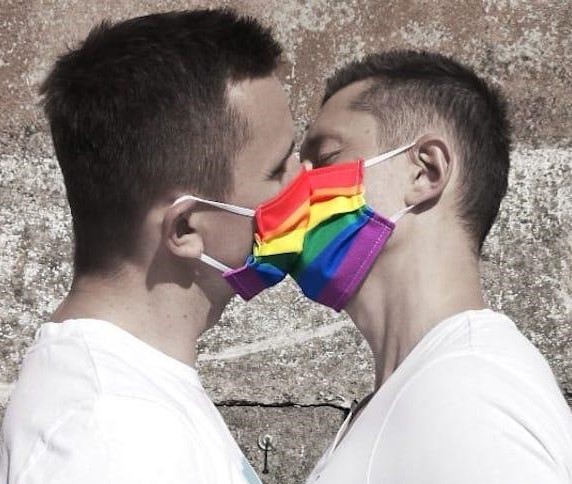
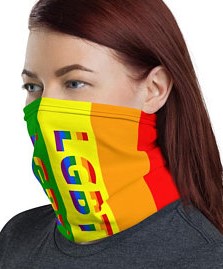
This year’s Pride festivities will look a whole lot
different than the colorful crowds of parades past, but
the annual celebration of the LGBTQ community and
commemoration of the Stonewall Riot continues. Virtual
events in June bring the joyous spirit of Pride into
your living room through Zoom dance parties and archival
film. Although there won’t be any elaborate floats this
year, many cities are sponsoring a slew of virtual
events kicking off on June 1. This year’s Pride will
look much, much different. Amid the Covid-19 pandemic,
there’s just no way to facilitate in-person festivals
for the foreseeable future.
Top Ten Best Pride Festivals
Essential Gay Anthems Perfect for Pride
Month
Pride Parade Survival Guide
Images of Cleveland Celebrating Queer Joy
Pride Started With Protest
Evolution of the Gay Pride
Parade
Gay Pride: Fight Song
50th Anniversary: The
Revolution May Have Finally Arrived
The Power of Pride
Pride Wristband Resources
Pride Everywhere: Trevor Project ft. Demi Lovato
World Pride Celebration
NYC 2019
Dallas: Home of the Most Rainbow Crosswalks
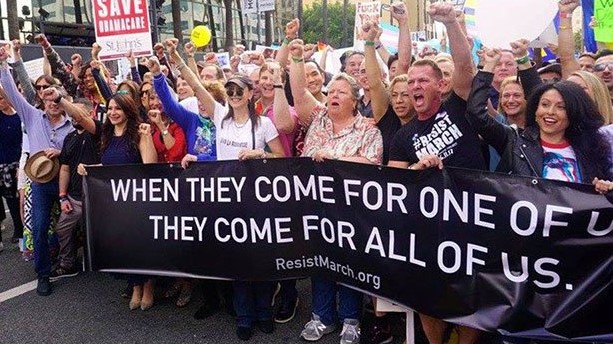
Solidarity: Los
Angeles Pride Supports Black Lives Matter
L.A. Pride
is taking to the streets. Previously, Los Angeles's
annual Pride celebration had canceled all nondigital
events in response to the pandemic. However, the
protests against police brutality and the killing of
George Floyd have galvanized its organizer, Christopher
Street West, to hold a solidarity march, scheduled for
June 14. And marchers will be wearing facemasks.
This year marked the 50th anniversary of the first Pride
march in L.A., making the demonstration even more
significant, said Estevan Montemayor, president of CSW's
Board of Directors. “Fifty years ago Christopher Street
West took to the streets of Hollywood Blvd in order to
peacefully protest against police brutality and
oppression,” Montemayor said in a statement. “It is our
moral imperative to honor the legacy of Marsha P.
Johnson and Sylvia Rivera, who bravely led the Stonewall
uprising, by standing in solidarity with the Black
community against systemic racism and joining the fight
for meaningful and long-lasting reform.”
This is not the first time that L.A. Pride modified its
annual event to respond to a concurrent crisis. In
2017, L.A. Pride shifted from a corporate-sponsored
parade to a Resist March in response to the presidential
election of Donald Trump, who has pushed racist and
anti-LGBTQ views and policies from the nation's highest
seat of power.
[Source: Daniel Reynolds, Advocate Mag, June 2020]
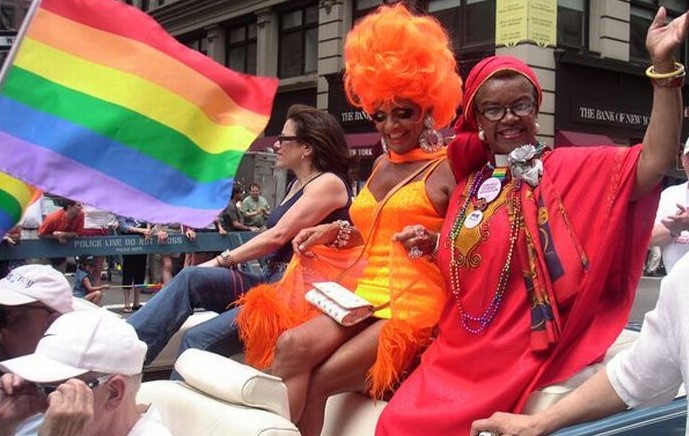
LGBTQ Pride Anthems
NYC Celebrates Pride Month in a Big Way
Chicago Tribune: Gay Pride Parades Across the Nation
Pride 2019: Love Wins
Gay Songs: Ultimate Pride Playlist
NYC Police Apologize for Raid on Stonewall Inn
Iconic Queer Images
HRC: Pride is More Than a Parade
Key West: Upgraded Rainbow
Crosswalks
Pride Everywhere: Trevor Project ft. Demi Lovato
History: First Gay Pride Parades
Is Pride a Protest or a Party?
LGBTQ Pride Parades
Pride
parades (also known as pride marches, pride events, and
pride festivals) are events celebrating and affirming lesbian, gay,
bisexual, transgender, and queer (LGBTQ) culture and
raising awareness of LGBTQ issues and concerns. The events also at times serve as
demonstrations for legal rights such as same-sex
marriage. Most pride events occur annually, and many
take place around June to commemorate the 1969 Stonewall
riots in New York City, a pivotal moment in modern LGBTQ
social movements.
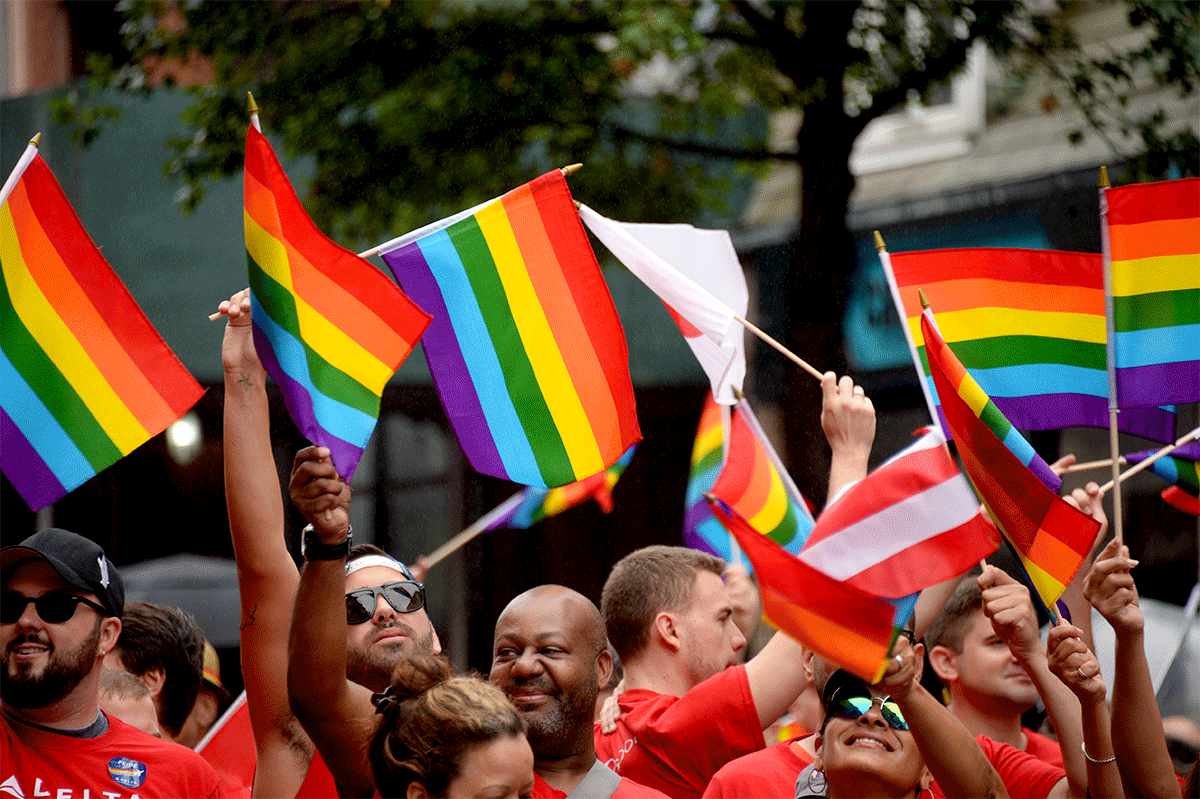
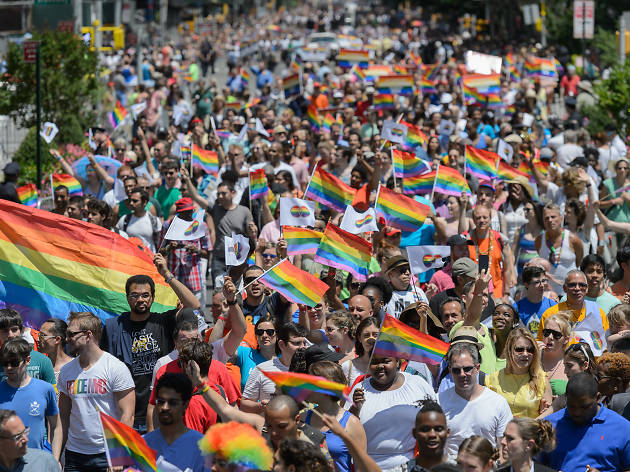
CNN: Pride Month
Brief Photo History of Queer Pride and
Protest
World Pride Celebration
NYC 2019
Top Ten Best Worldwide
LGBTQ Pride Festivals
Pride Parade Survival Guide
Info: Protest, Riot, Demonstration, Revolution
World Wide Pride Celebrations
This is Me: Celebrate Pride Month
We Stand United: World Pride Song
San Francisco Gay Pride Parade 1987
Many parades still have at least some of the original
political or activist character, especially in less
accepting settings. The variation is largely dependent
on the political, economic and religious activity of the
area. However, in more accepting cities, the parades
take on a festive, or even Mardi Gras-like, character.
Many have a party-like atmosphere.
Some parades may include elements that are not entirely
appropriate for minor children.
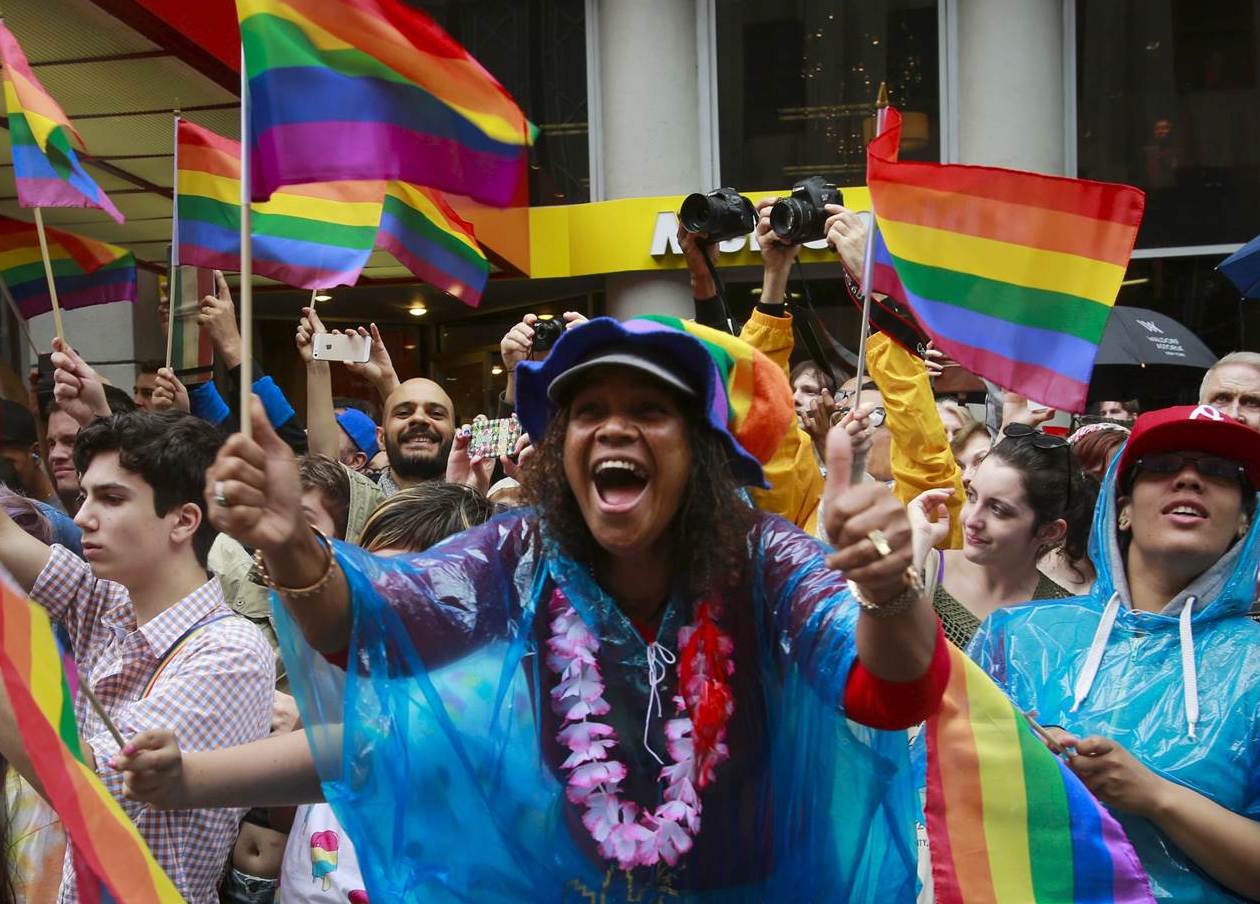
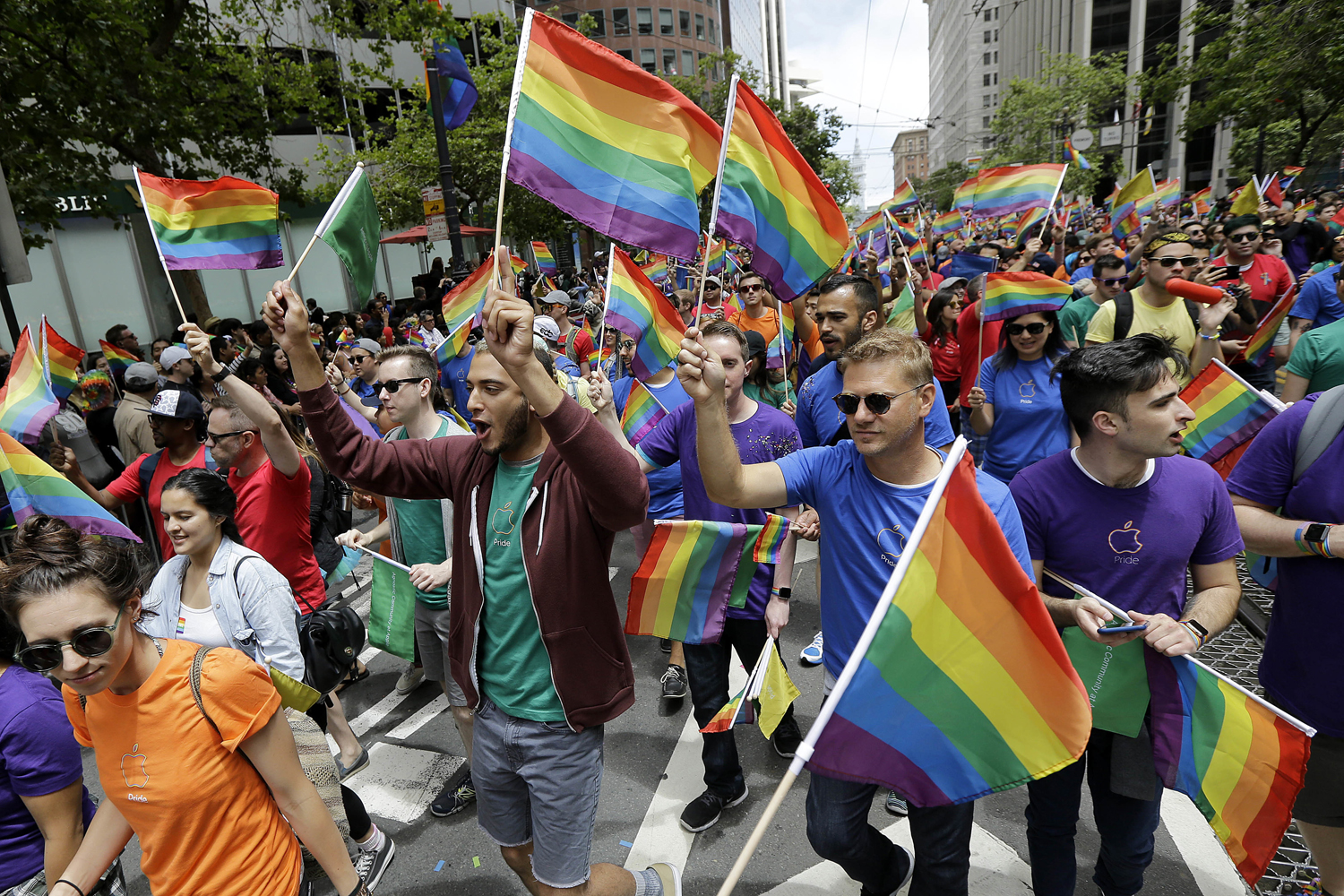
Large
parades often involve floats, dancers, drag queens, and
amplified music. They also include marchers
carrying flags, signs, and banners and participants
throwing beads into the crowd. Some include celebrities,
marching bands, motorcycles, skaters, and acrobats. But even such celebratory parades
usually include political and educational contingents,
such as local politicians and marching groups from LGBTQ
institutions and organizations of various kinds.
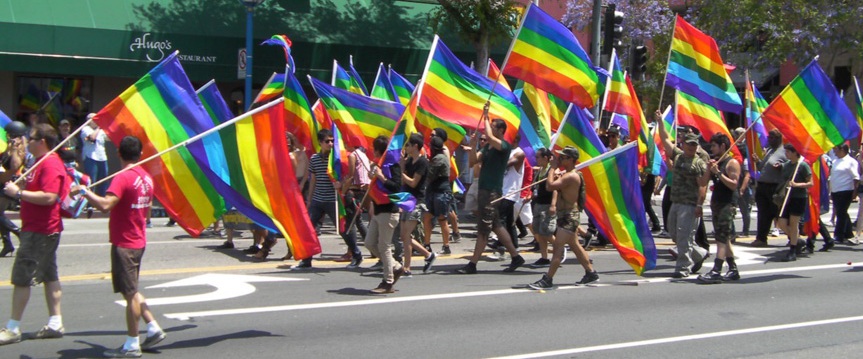
Celebrating Pride in New Orleans 2023
Pride Parade in Provincetown
International LGBTQ Pride
Fifty Year History of LGBTQ Pride
San Francisco Gay Pride Parade 1987
Celebrate Pride With LGBTQ
Celebrities
Pride is More Than a Parade
Other typical parade
participants include local LGBTQ bars and clubs,
organizations that provide specialized services to the
LGBTQ community (support groups, clinics, LGBTQ
centers), LGBTQ-friendly businesses, local LGBTQ-friendly churches
(Metropolitan Community Churches, United Church of
Christ, Unitarian Universalist Churches), Parents and
Friends of Lesbians and Gays (PFLAG), LGBTQ student
organizations from local colleges, and LGBTQ employee
associations from large businesses.
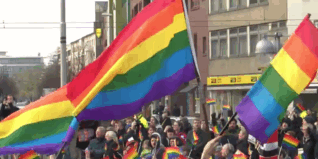
Gay Pride: Fight Song
Flying with Pride: Colorful Guide to LGBTQ Flags
Info: Protest, Riot, Demonstration, Revolution
Celebrating Vermont Pride: A State of
Freedom and Unity
Gay Pride Events: Protest or Party
Tom Daley: London Pride
Parade 2017
Pride Started With Protest
LGBTQ Pride Anthems
Even the most festive parades usually offer some aspect
dedicated to remembering victims of AIDS and anti-LGBTQ
violence. Some particularly important pride parades are
funded by governmental agencies and corporate sponsors,
and promoted as major tourist attractions for the cities
that host them. In some countries, some pride parades
are now also called Pride Festivals. Some of these
festivals provide a carnival-like atmosphere in a nearby
park or city-provided closed-off street, with
information booths, music concerts, barbecues, beer
stands, contests, sports, and games.
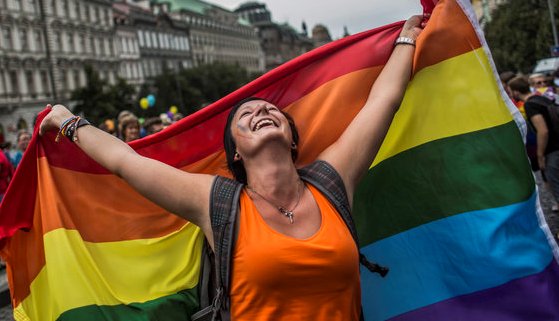
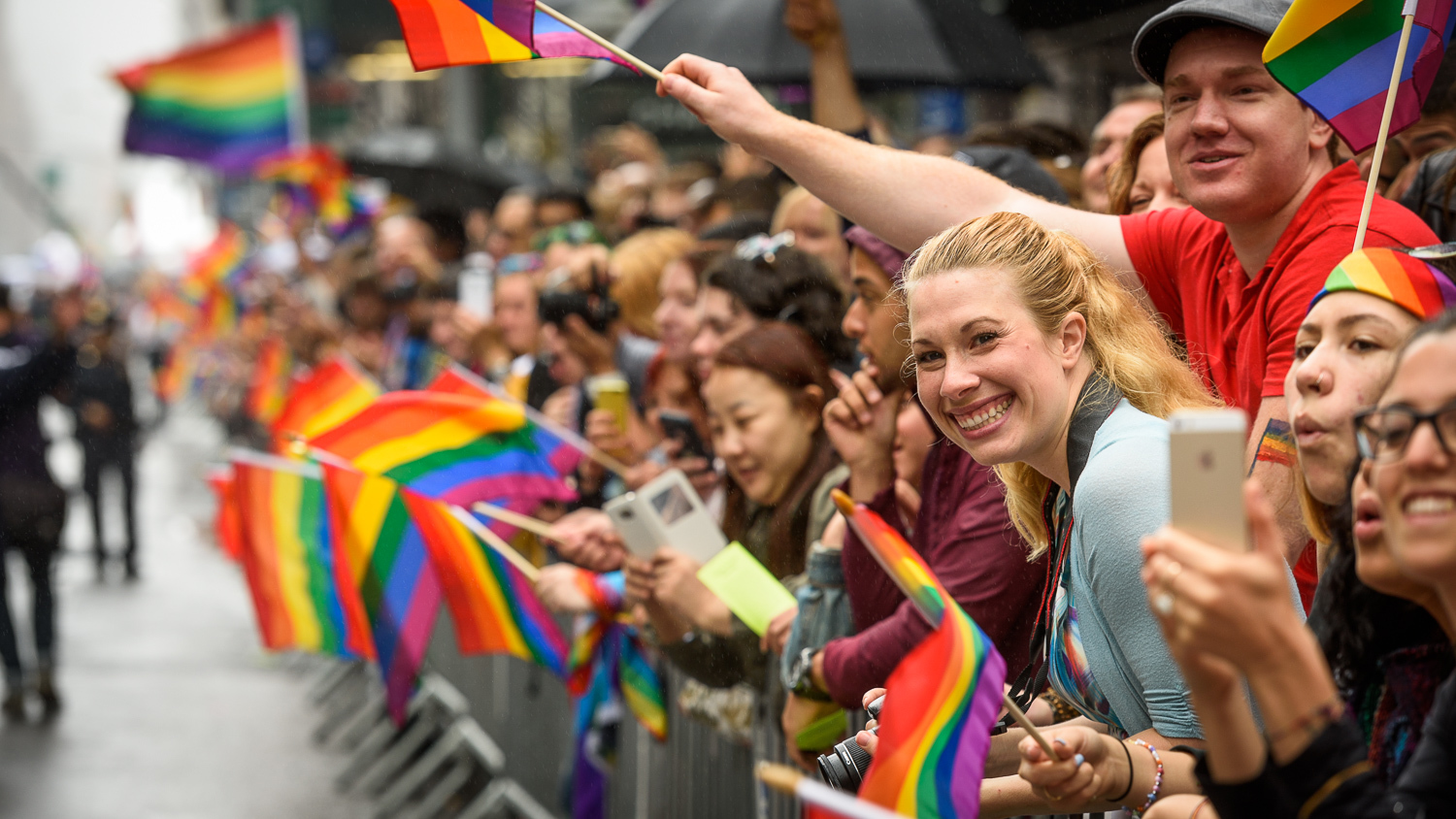
Gay Songs: Ultimate Pride Playlist
NBC News: Pride March Turns Into Protest
World Wide Pride Celebrations
Pride March Images:
1969-Present
Info: Protest, Riot, Demonstration, Revolution
Key West: Upgraded Rainbow
Crosswalks
Top Ten Best Worldwide
LGBTQ Pride Festivals
Pride
Primer
The
'dividing line' between onlookers and those marching in
the parade can be hard to establish in some events.
However in cases where the event is received with
hostility, such a separation becomes very obvious. There
have been studies considering how the relationship
between participants and onlookers is affected by the
divide, and how space is used to critique the
heteronormative nature of society.
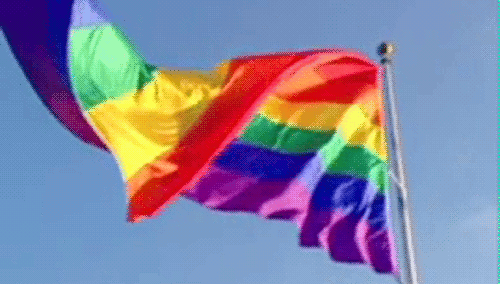
The Significance
of LGBTQ Pride Celebrations
LGBTQ Pride celebrations hold a profound significance
(importance, meaning) in our society, serving as
powerful demonstrations of acceptance, visibility, and
equality for the lesbian, gay, bisexual, transgender,
and queer community. Originating from the Stonewall
riots in 1969, these celebrations have evolved into
global events that go beyond mere festivities. Pride
events are a testament to the progress made in the fight
against discrimination and an acknowledgment of the
ongoing struggle for equal rights.
Visibility and Acceptance:
One of the primary purposes of LGBTQ Pride celebrations
is to foster visibility and promote acceptance of
diverse sexual orientations and gender identities. The
rainbow flag, a symbol of pride, waves high during these
events, acting as a beacon for those who may still be
struggling with their identity. By providing a platform
for LGBTQ individuals to express themselves openly,
Pride celebrations contribute to a broader understanding
and acceptance of the spectrum of human diversity.
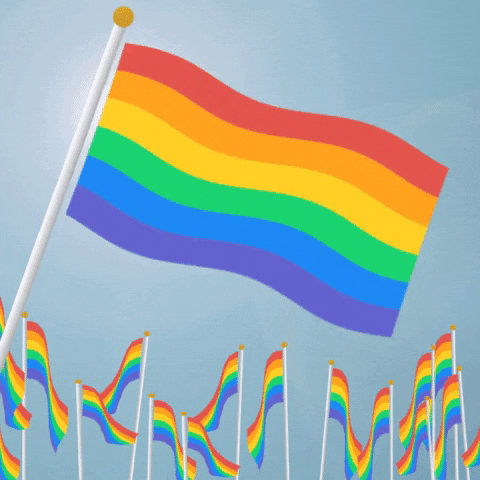
The Goal of the Powerful is to Extinguish our Light: Joy
is a Protest, Celebration is Dissent
Iconic Queer Images
Celebrate Pride With LGBTQ
Celebrities
Celebrating Vermont Pride: A State of
Freedom and Unity
Celebrating Pride in New Orleans 2023
Top Ten Best Pride Festivals
International LGBTQ Pride
Armed With Pride: LGBTQ People March into Battle
Brief Photo History of Queer Pride and
Protest
How to be a Better Ally at Pride Events
Lady Gaga Performs at the
Stone Wall Inn
Community
Empowerment:
Pride celebrations serve as a unifying force, bringing
together the LGBTQ community and its allies. These
events create a sense of belonging and empowerment,
enabling individuals to connect with others who share
similar experiences and challenges. Through this unity,
the LGBTQ community gains strength, resilience, and a
collective voice that amplifies the call for equal
rights and social acceptance.
Historical Roots and Activism:
LGBTQ Pride celebrations trace their roots back to the
Stonewall riots, a pivotal moment in the fight for LGBTQ
rights. Pride events carry forward the legacy of
activism and advocacy, reminding society of the
struggles faced by the community and the milestones
achieved. These celebrations are not just about revelry
but are also a platform for raising awareness about
ongoing issues, such as discrimination, violence, and
unequal legal treatment.
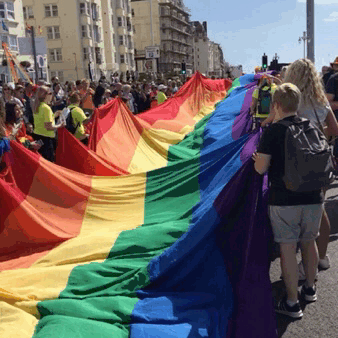
The Power of Pride
Pride is More Than a Parade
Fifty Year History of LGBTQ Pride
Brief Photo History of Queer Pride and
Protest
San Francisco Gay Pride Parade 1987
Top Ten Best Worldwide
LGBTQ Pride Festivals
Pride
Primer
50th Anniversary: The
Revolution May Have Finally Arrived
LGBTQ People Have Been Marching Every June for 50 Years
NYC Police Apologize for Raid on Stonewall Inn
Key West: Upgraded Rainbow
Crosswalks
Pride March Images:
1969-Present
Legal and Social Change:
The impact of Pride celebrations extends beyond the
glittering parades and vibrant parties. Over the years,
Pride events have contributed to significant legal and
social changes. The increased visibility and activism
during Pride months have played a role in the
decriminalization of homosexuality, the legalization of
same-sex marriage in numerous countries, and the
implementation of anti-discrimination policies. Pride
serves as a catalyst for positive change by challenging
societal norms and fostering a more inclusive
environment.
Challenges and Ongoing Struggles:
While Pride celebrations have marked substantial
progress, they also underscore the ongoing challenges
faced by the LGBTQ community. Hate crimes,
discrimination, and societal prejudices persist in
various parts of the world. Pride events serve as a
reminder that the fight for equality is far from over,
motivating individuals to continue advocating for change
and challenging oppressive norms.
LGBTQ Pride celebrations are more than just colorful
parades; they are emblematic of a resilient community's
struggle for acceptance, visibility, and equal rights.
These events celebrate diversity, empower individuals,
and contribute to the ongoing narrative of progress in
the fight against discrimination. As society evolves,
Pride celebrations remain crucial in fostering
understanding, empathy, and acceptance for all
individuals, regardless of their sexual orientation or
gender identity.
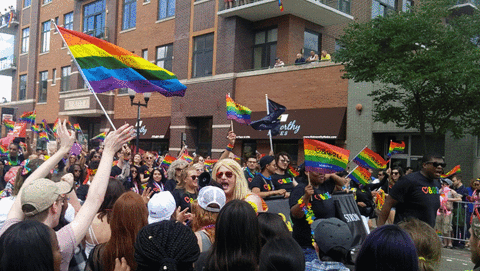
Vox: LGBTQ Pride Explained
Brief Photo History of Queer Pride and
Protest
Pride Started With a Riot: Remembering Stonewall
San Francisco Gay Pride Parade 1987
The Power of Pride
World Pride Celebration
NYC 2019
Straight Allies at Pride Events
Gay Pride
Calendar
YouTube: New York City Pride Parade Highlights
Vox: LGBTQ Pride Explained
NYC Police Apologize for Raid on Stonewall Inn
Info: LGBTQ Protests and
Demonstrations
Celebrating LGBTQ Pride
"The gay
pride parade is one of the biggest events of the year
for the LGBTQ calendar. Founded in 1970 for the one-year
anniversary of the Stonewall Riots, gay pride parades
are a symbol of LGBTQ people’s unwillingness to remain
in the closet any longer. And they aren’t all jockstraps
and drag queens either. For their entire history, gay
pride parades have always been a site of civic
engagement, with a marked uptick in corporate
participation in recent years."
-Advocate
Magazine
Today Gay
Pride parades occur on weekends in June throughout the
United States, as well as in many other countries around
the world. It is unusual for folklorists to be able to
say exactly when and where a tradition began, but this
is a rare case when history does record the events. The
tradition of Gay Pride parades grew out of a conflict
between Lesbian, Gay, Bisexual, Transgender, and Queer
New Yorkers and police. Throughout the 1950s and 1960s,
homosexual behavior, cross-dressing, and other
expressions of gender nonconformity were treated as
crimes in most parts of the United States. On June 28,
1969, police raided the Stonewall Inn in Greenwich
Village, New York, to arrest LGBTQ patrons. Protests and
conflicts with police lasted several days, and have come
to be called the Stonewall riots.
Stonewall was a galvanizing event in the quest for Gay
rights. A short time after the events at Stonewall Inn,
new Gay rights organizations began springing up,
particularly in New York, California, and Chicago. And
publications were created to help spread the movement.
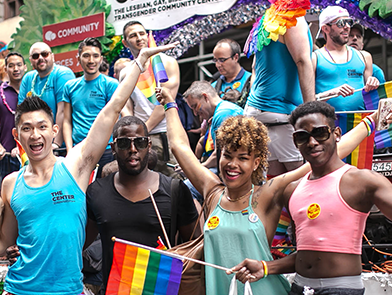
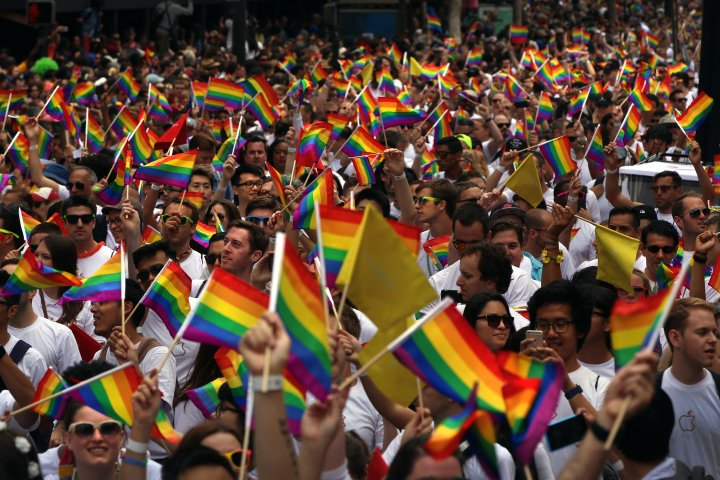
Wikipedia: Pride Parades
Fifty Year History of LGBTQ Pride
Evolution of the Gay Pride
Parade
Pride is More Than a Parade
History of LGBTQ Pride
Essential Gay Anthems Perfect for Pride
Month
Iconic Queer Images
Advocate: Photos From Los Angeles Pride Parade
Pride 2019: Love Wins
NPR: From Pride to Protest at LGBTQ Parades
Info: LGBTQ Protests and
Demonstrations
Pride Event Tips for Straight People
On June 28, 1970, the first anniversary of the Stonewall
Inn riots was marked with the first “Gay Pride” or “Gay
Freedom” parades in New York, Chicago, Los Angeles, and
San Francisco. In the 1970s, women’s rights and African
American rights were already making headlines and
securing allies throughout American society, and Gay
rights joined them. The San Francisco marchers used “Gay
Freedom” in their parades through 1994, but “Gay Pride”
was the phrase that caught on in most of the rest of the
country. The concept of “Gay Pride” was patterned on a
successful effort in the African American Civil Rights
movement to use “Black Pride” to expand the conversation
from protests alone to a positive expression of
identity.
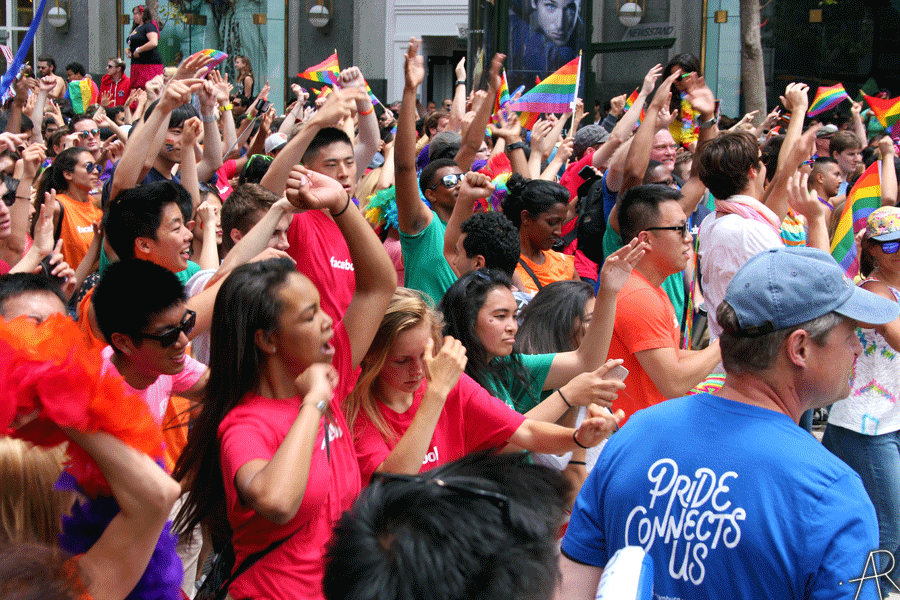

Chicago Tribune: Gay Pride Parades Across the Nation
Pride March Images:
1969-Present
History: First Gay Pride Parades
Reuters: Washington DC Gay Pride Draws Thousands
Top Ten Best Worldwide
LGBTQ Pride Festivals
LGBTQ Pride Anthems
Essential Gay Anthems Perfect for Pride
Month
Advocate: Over 100 Photos From Palm Springs Pride
Iconic Queer Images
One characteristic of Gay Pride events is the use of
humor to get serious points across. Aware that one of
the issues they needed to confront was fear,
demonstrators made humor a standard in the expression of
Gay Pride early on. Inclusiveness is also a strong
feature of these events: all supporters of the cause are
welcomed.
The use of the rainbow flag as a symbol of LGBTQ unity
and pride is also bound up in the creation of the Gay
Pride parades. A visible symbol that unified the various
groups represented in the parades was needed. The first
rainbow flag was used in the Gay Freedom Day march in
San Francisco on June 25, 1978. The original eight-color
design by Gay activist Gilbert Baker has since been
simplified to six colors, but the original one is still
sometimes used. As seen in these photos of a 2012 Gay
Pride parade in San Francisco, the flag colors now show
up in costumes and accessories as well as flags. As Gay
Pride events spread internationally, so did the rainbow
flag.


To identify oneself as Lesbian, Gay, Bisexual, or
Transgender carries a risk that should not be forgotten
in the celebratory atmosphere of Gay Pride events. Early
in the movement marchers prepared for the possibility of
arrest by police or violence from opposing groups or
onlookers. Many who “came out” also risked the loss of
ties with family members and friends. The tragic mass
shooting in Orlando, Florida on June 12, 2016 is a
reminder to all Americans that violence towards the
LGBTQ community continues to be of serious concern. The
determination of participants in Gay Pride events to
carry on this year in spite of the danger speaks to the
continued courage and dedication of this generation’s
marchers to the issue of LGBTQ equality.
We should also remember that great progress has been
made in the struggle for Gay rights. Gay Pride marches
celebrate not only progress toward fair treatment of
LGBTQ citizens, but the American ideals of inclusiveness
and strength in diversity as well.
YouTube: New York City Pride Parade Highlights
Gay Songs: Ultimate Pride Playlist
Celebrate Pride With LGBTQ
Celebrities
LGBTQ Pride Parades Around
the World
Goal of the Powerful is to Extinguish our Light: Joy
is Protest, Celebration is Dissent
Is Pride a Protest or a Party?
CNN: Pride Month
Pride Event Tips for Straight People
Dallas: Home of the Most Rainbow Crosswalks
History of LGBTQ Pride
International LGBTQ Pride
Info: Protest, Riot, Demonstration, Revolution
Pride 2019: Love Wins
Essential Gay Anthems Perfect for Pride
Month

LGBTQ Pride Songs
This
collection of titles and artists are popular songs in
the LGBTQ community. You may hear them in LGBTQ clubs as
dance music or at LGBTQ Pride parades, parties, and
other events as celebration music.
HOME

QUEER CAFE
│ LGBTQ Information Network │ Established 2017
|